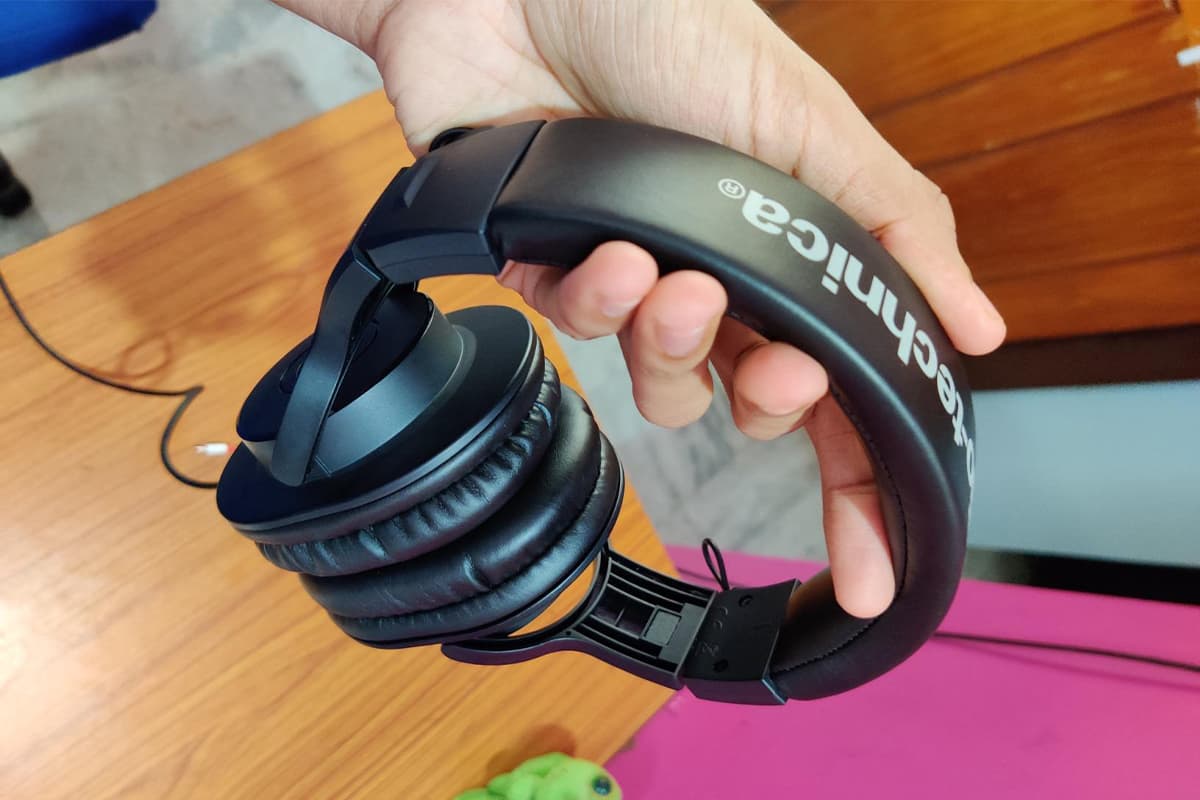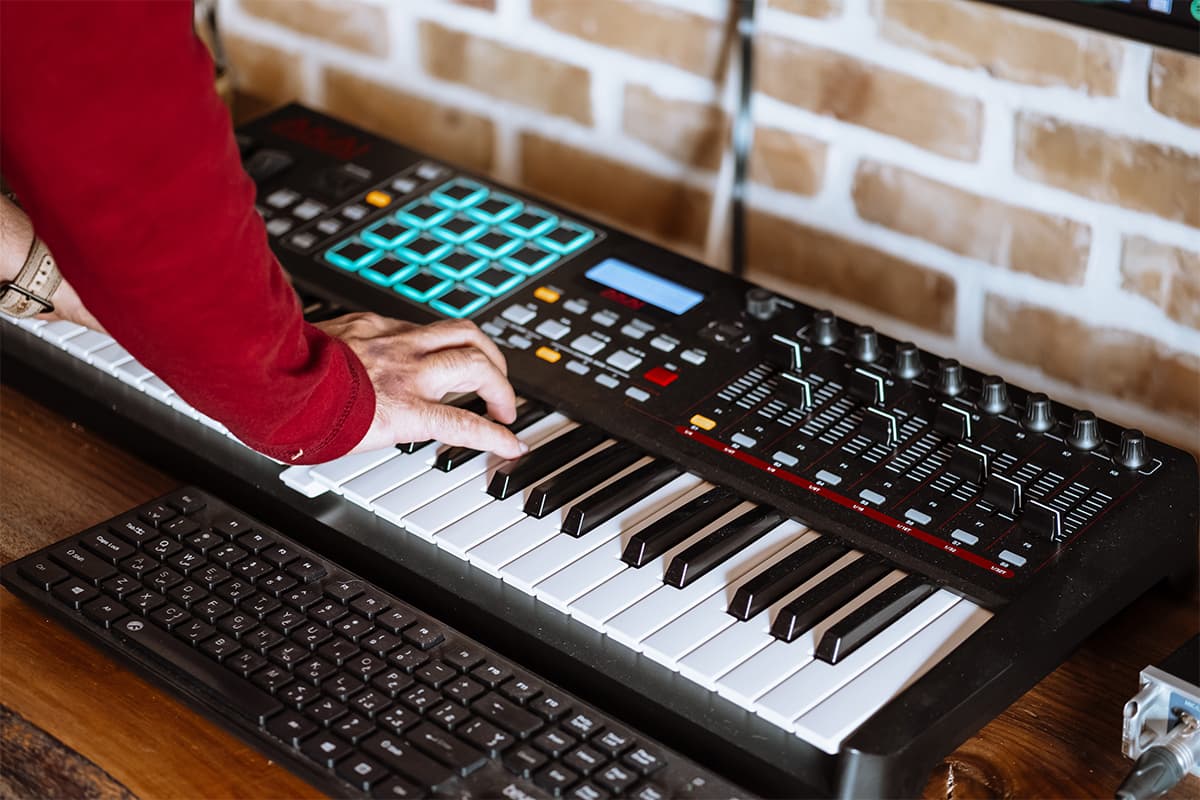Explore Indian Musical Instruments with Pictures and Names
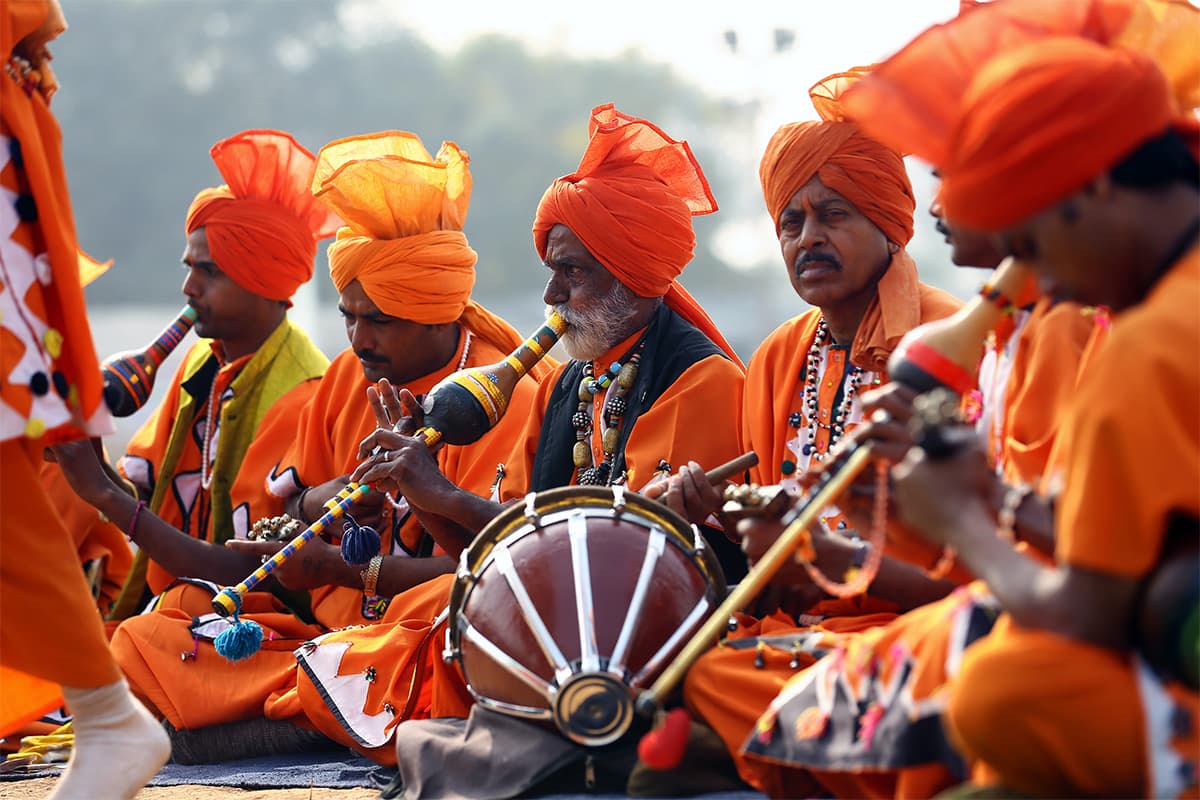
Introduction
Why knowing the names of Indian musical instruments is important?
Indian music has a rich cultural history that dates back thousands of years. It is a diverse form of music that is known for its unique sound and instruments. The Indian subcontinent is home to a wide range of musical instruments, each with its own distinct sound and personality. In order to truly appreciate the beauty of Indian music, it's important to understand the names and characteristics of the instruments used to create it. In this article, we'll be exploring the importance of knowing the names of Indian musical instruments, as well as providing you with pictures and descriptions of some of the most commonly used instruments. So, whether you're a musician, music lover, or simply curious about Indian culture, this article is for you.
A brief history of Indian music
Indian music has a rich and diverse history that dates back thousands of years. The origins of Indian classical music can be traced to the Vedas, which are among the oldest sacred texts of the Hindu religion. Over time, Indian music evolved and became more complex, with different regions of the country developing their own unique styles and instruments.
Indian music has been influenced by various cultures over the centuries, including Persian, Arab, and European music. The Mughal Empire, which ruled India from the 16th to the 19th century, brought with it many Persian and Arabic musical traditions, which were incorporated into Indian music.
Today, Indian music continues to be an important part of the country's cultural heritage, with classical, folk, and popular music genres thriving. The names of Indian musical instruments play an important role in understanding the different styles and traditions of Indian music.
Classification of Indian musical instruments with pictures and their names
Indian musical instruments can be classified into four categories:
- String Instruments (Tat Vadya): These instruments are played by plucking or bowing strings. Examples of stringed instruments include the sitar, sarod, sarangi, veena, and tanpura.
- Wind Instruments (Sushir Vadya): These instruments are played by blowing into them, and include flutes, clarinets, trumpets, and saxophones. Examples of Indian wind instruments include the bansuri, shehnai, nadaswaram, and harmonium.
- Percussion Instruments (Avanaddh Vadya): These instruments are played by striking or shaking them, and include drums, cymbals, and bells. Examples of Indian percussion instruments include the tabla, mridangam, dholak, ghatam, and kanjira.
- Electronic Instruments (Vidyut Vadya): These instruments produce sound electronically, and include synthesizers, drum machines, and samplers. While not traditionally used in Indian classical music, electronic instruments are becoming increasingly popular in contemporary Indian music.
Each of these categories has its own unique characteristics, and each instrument within them has its own unique sound and playing technique. Understanding the classification of Indian musical instruments can help one appreciate and understand the diverse sounds of Indian music.
String Instruments (Tat Vadya)
Sitar
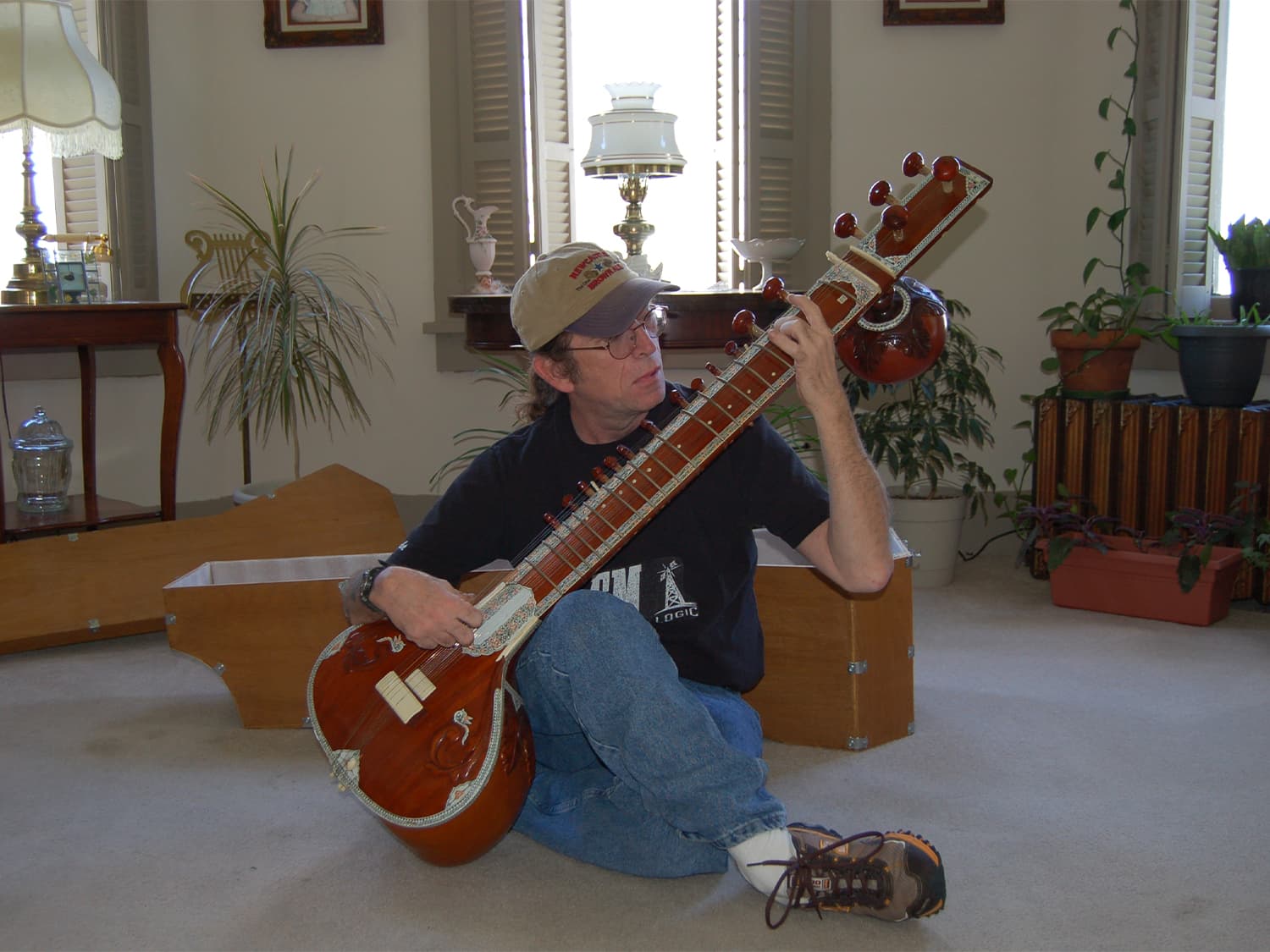
The sitar is a stringed musical instrument that is commonly used in Indian classical music. It has a long neck with 20 frets and 6 or 7 strings, which are played with a plectrum made of a wire ring and a pointed tip. The sitar is known for its distinctive sound, which is produced by the sympathetic strings that vibrate and resonate with the main strings. The instrument is also known for its intricate and complex playing techniques, which require years of practice to master. Sitar players often use various techniques such as bending, sliding, and hammering to produce different types of notes and sounds. The sitar has been popularized by many famous musicians such as Ravi Shankar, and it continues to be an important part of Indian classical music to this day.
Sarod
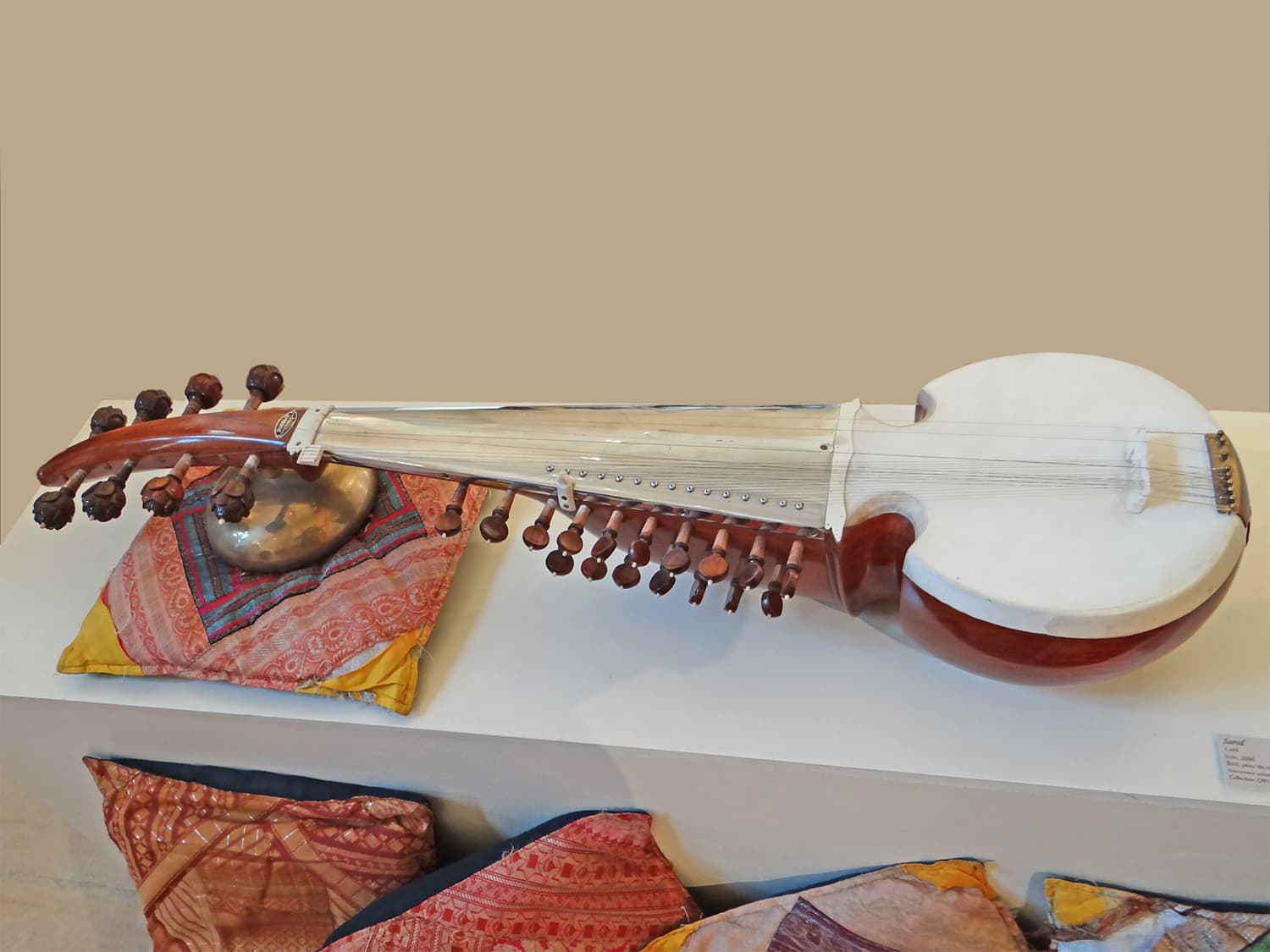
Sarod is a fretless plucked string instrument that originates from India. It is a versatile and dynamic instrument with a deep, resonant sound. The Sarod has a long, thin neck with 25-26 steel frets and a smooth, polished wooden body. The strings are made of metal and are plucked with a plectrum made of coconut shell or nylon. The instrument has a powerful tone and is capable of producing a wide range of sounds, from soft and soothing to strong and intense. The Sarod is often used in Indian classical music and is known for its ability to evoke a range of emotions in listeners. Its unique sound has also made it popular in fusion music and other contemporary genres. Overall, the Sarod is a beautiful and versatile instrument that has captured the hearts of music lovers around the world.
Veena
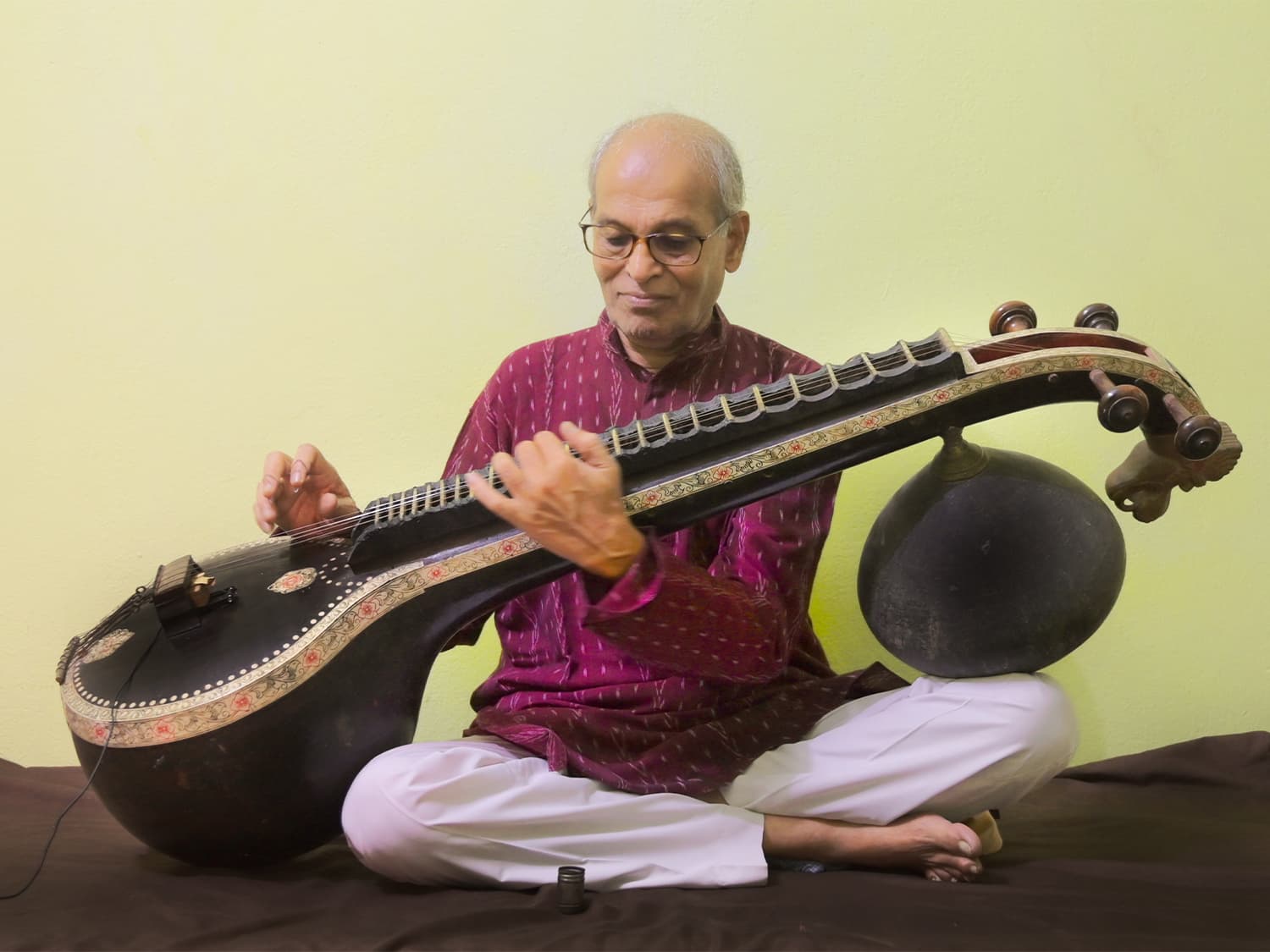
Veena is one of the oldest stringed instruments that originated in the Indian subcontinent. It has been an integral part of Indian classical music for centuries. It is a long-necked, fretted, and plucked instrument that comes in different variations like Saraswati veena, Rudra veena, and Vichitra veena. The veena produces a mellow, soothing sound that can be compared to the human voice. The veena has a resonating chamber made of wood and a hollow neck made of jackfruit tree wood. It has four main strings that are plucked with the right hand and three drone strings that provide a continuous sound with the left hand. The frets on the veena are movable, which allows the musician to produce microtones and create intricate melodies.
Playing the veena requires a lot of practice and skill, as it is a complex instrument that demands precision and dexterity. Despite its difficulty, the veena is a popular instrument among musicians and is widely appreciated for its unique sound and cultural significance.
Rudra Veena
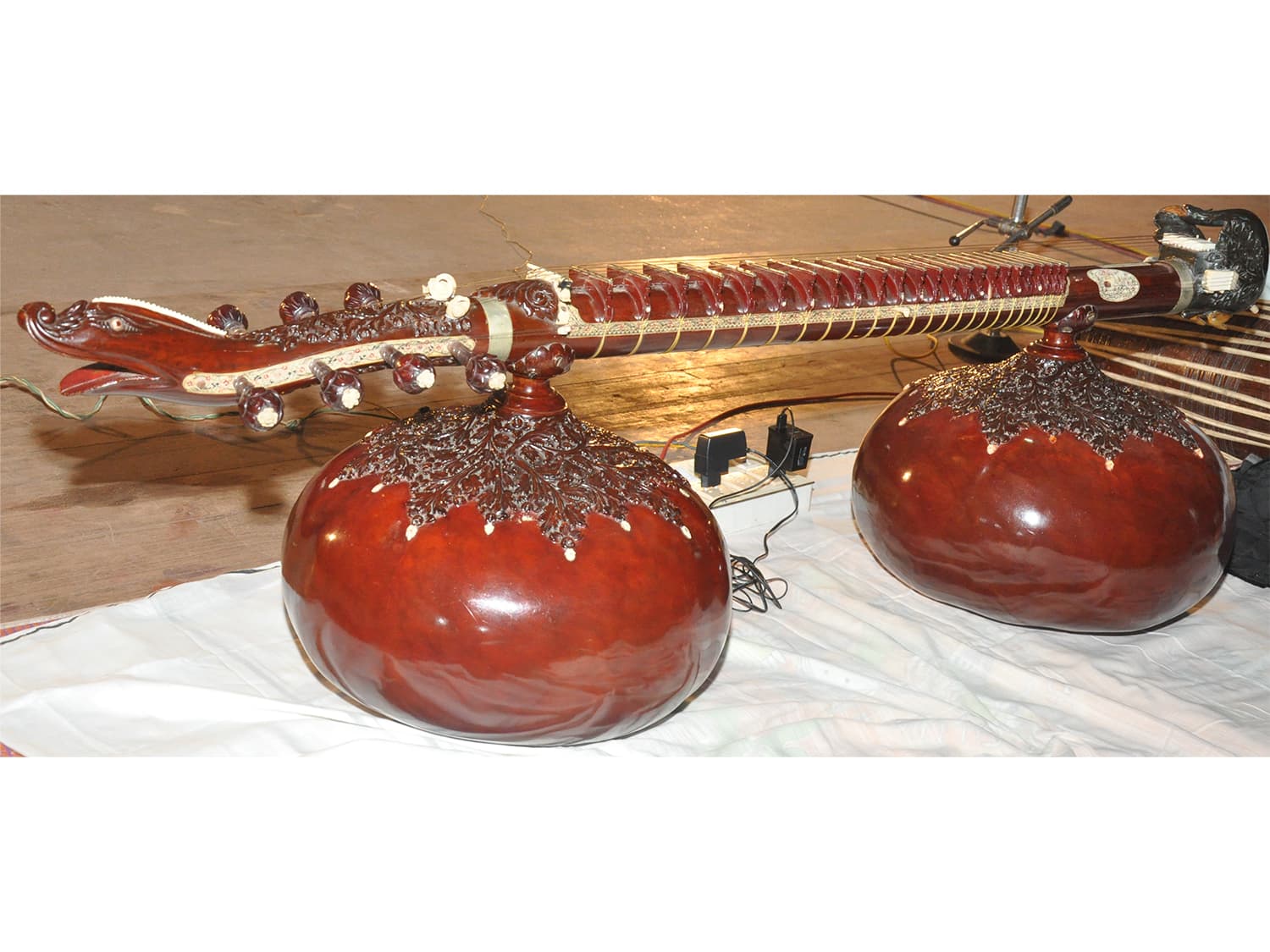
Rudra Veena is a stringed musical instrument that originated in ancient India. It is one of the oldest instruments in the Indian classical music tradition, with roots that can be traced back to the Vedic period. The name "Rudra Veena" is derived from the Hindu god Rudra, who is associated with music and art.
The Rudra Veena is a large, heavy instrument that is played while seated on the floor. It has a long, hollow body made of wood and two large gourds attached to either end. The instrument has four strings, which are made of steel and played with a bamboo bow. The Rudra Veena produces a rich, deep sound that is both melodic and meditative.
The Rudra Veena has been an important part of Indian classical music for centuries and is known for its ability to evoke a range of emotions in listeners. It is often played during religious and spiritual ceremonies, as well as in concerts and recitals. Despite its ancient origins, the Rudra Veena continues to be an important part of India's vibrant musical culture today.
Surbahar
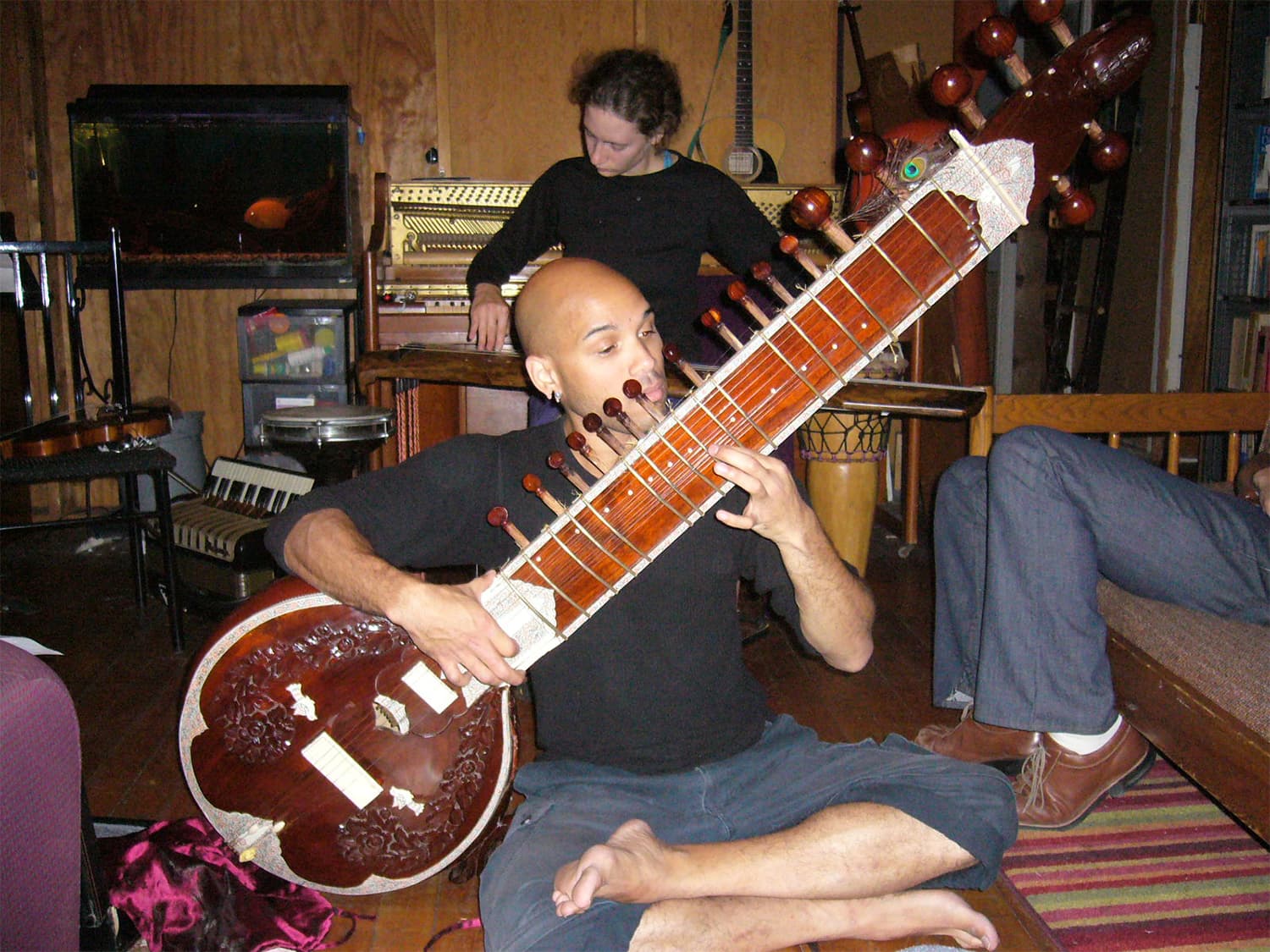
The surbahar is a plucked string instrument that originated in the northern regions of India. Also known as the bass sitar, it is larger and lower in pitch than the traditional sitar, and is often used as an accompanying instrument for vocal performances. The surbahar has a fretless neck and typically has five main playing strings, as well as several sympathetic strings that are not played directly but resonate in sympathy with the main strings. It is played with a plectrum, or mizrab, made of metal or coconut shell. The surbahar has a rich and deep sound, with a range of approximately three octaves. It is often used to perform slow and meditative pieces, as well as improvisational music known as ragas. Its unique sound and versatility make it a popular choice among Indian classical musicians.
Tanpura
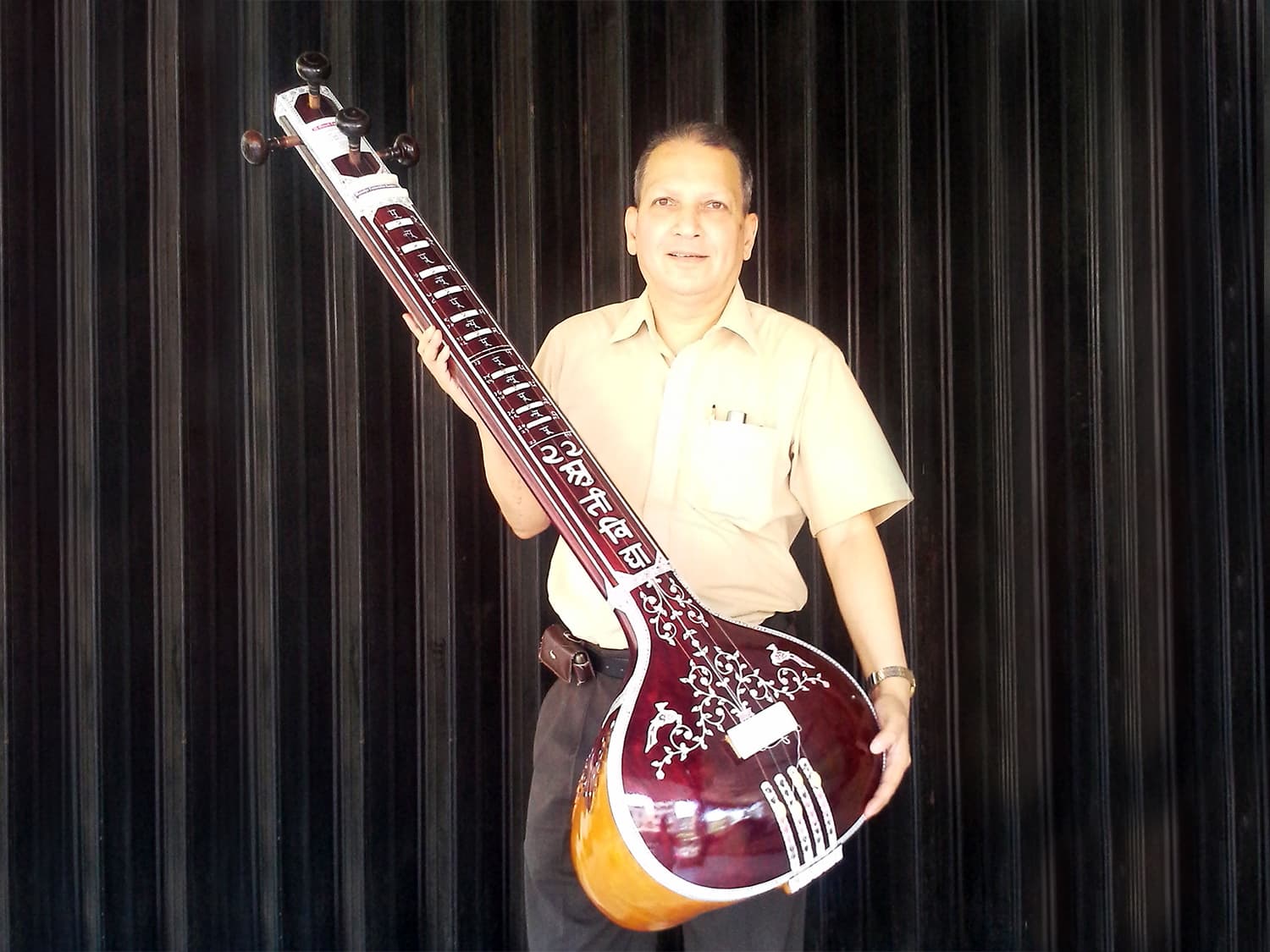
The Tanpura, also known as the Tambura or Tanpuri, is a long-necked plucked string instrument that is commonly used in Indian classical music. It has a resonating chamber made of wood, which produces a rich and full-bodied sound when the strings are plucked. The Tanpura has four strings, but unlike other string instruments, it is not meant to be played melodically. Instead, it is used to provide a constant drone in the background, acting as a support to the melody played on other instruments.
The strings of the Tanpura are typically made of steel or bronze, and they are plucked using a plectrum or fingertips. The instrument is usually played in a sitting position, with the resonating chamber resting on the ground and the neck held upright. The tuning of the Tanpura is very important, as it sets the pitch for the entire performance. The instrument is known for its soothing and meditative quality and is often used for accompanying vocal performances and instrumental ensembles.
Dilruba
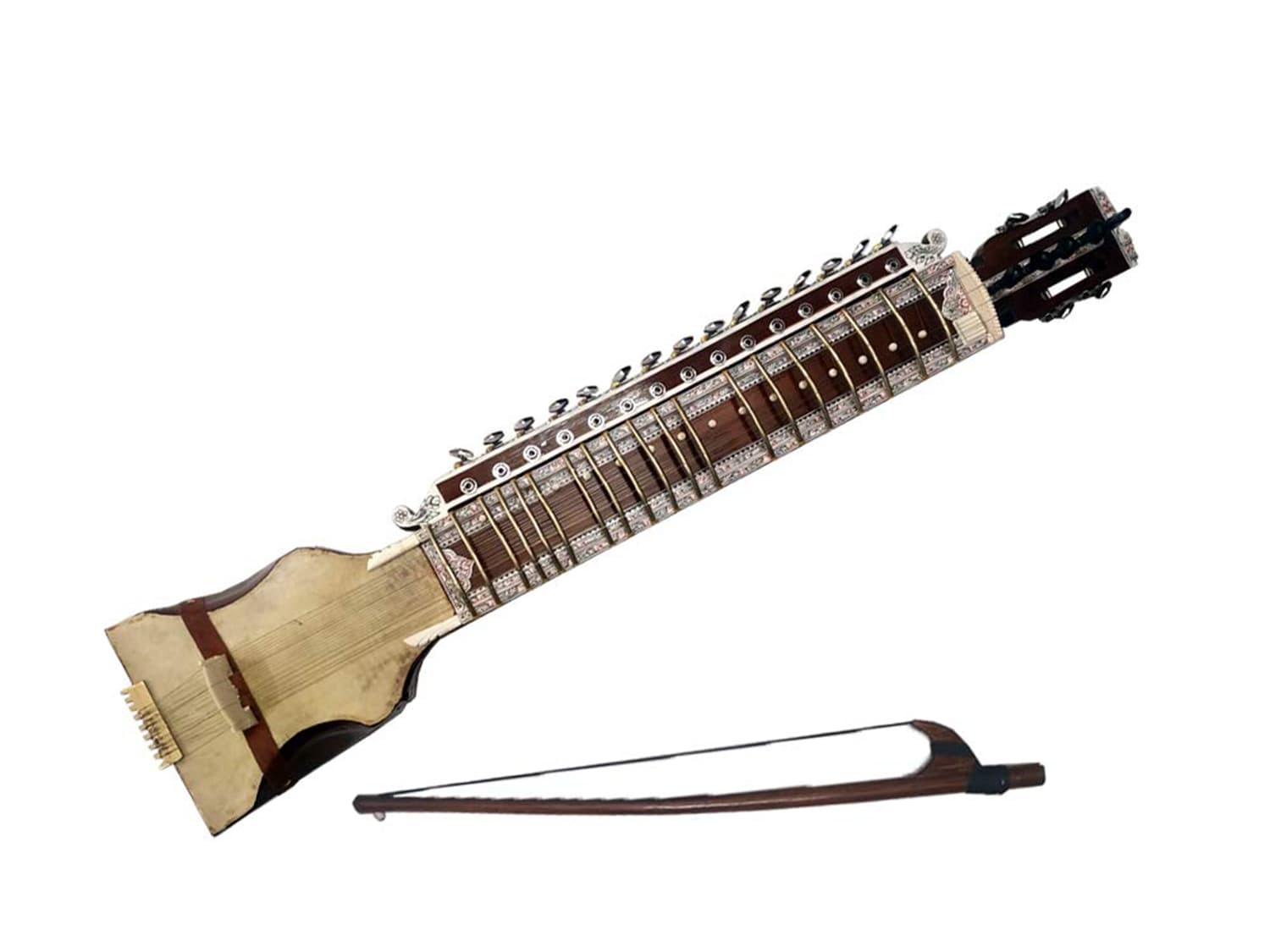
Dilruba is a stringed musical instrument that is played with a bow, similar to a violin. It has a long, narrow wooden body that is covered with animal skin and has 20 frets. The Dilruba produces a rich and deep sound that is commonly associated with Sufi music. It is a popular instrument in North India, especially in Punjab.
The Dilruba is played by placing it on the lap and pressing the strings down with the left hand while bowing with the right hand. The player can adjust the pitch of the notes by sliding their fingers along the strings. The instrument is often used as an accompaniment to vocal music and is also played solo.
The Dilruba is similar to the Esraj, another stringed instrument from North India, but is larger and has a deeper tone. It is a versatile instrument that can be used in a variety of musical genres, from classical to contemporary. Its unique sound and beautiful design make it a popular choice for musicians and music enthusiasts alike.
Esraj
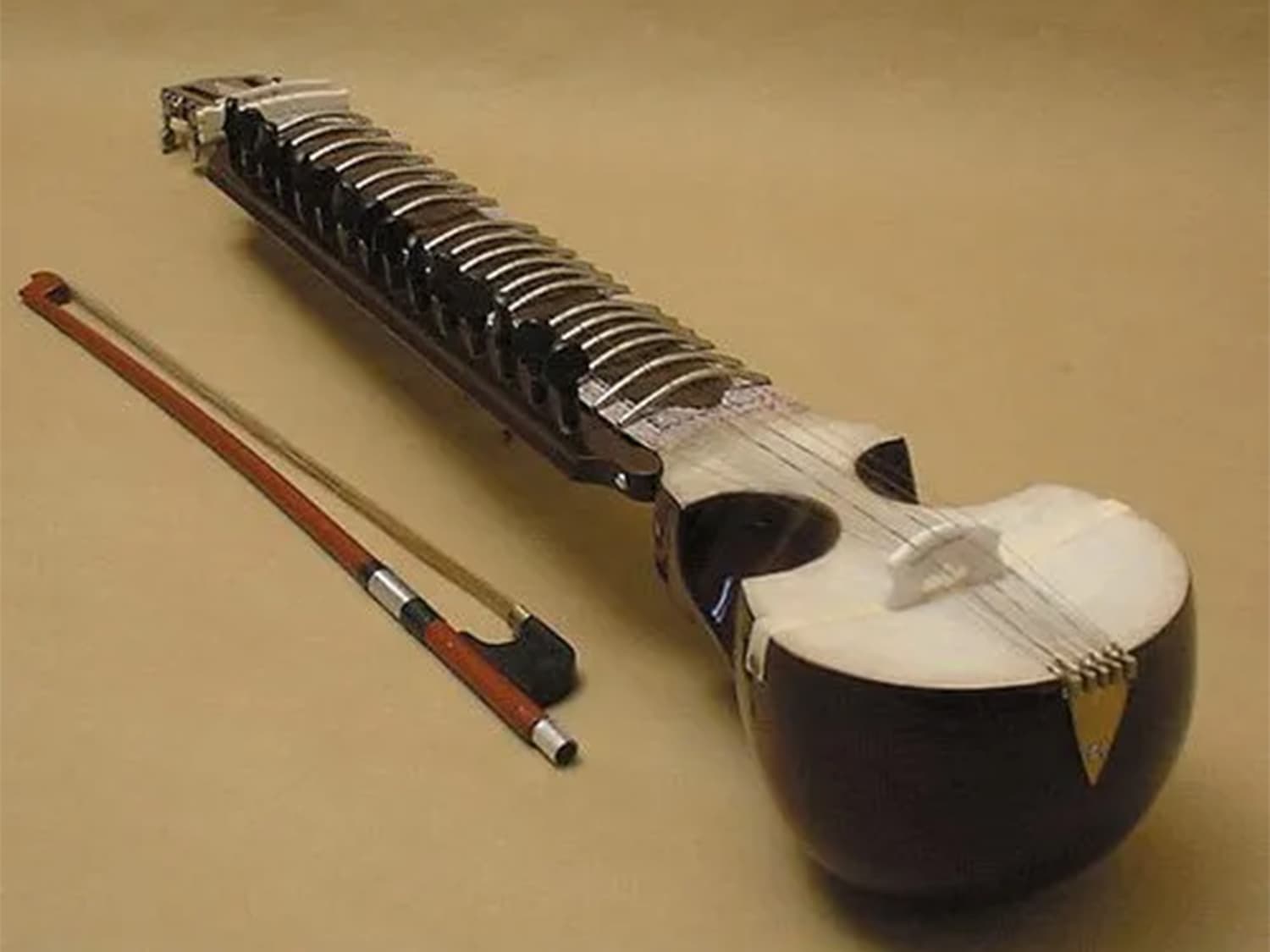
The Esraj is a bowed musical instrument commonly used in North India, Pakistan, and Bangladesh. It is similar in appearance to the Dilruba, but its sound is closer to that of the Sarangi. The Esraj has a small, hollow wooden body that is usually made of teak wood, with a skin or parchment-covered soundboard. It has four main playing strings made of steel or brass, as well as several sympathetic strings that resonate when the main strings are played. The instrument is played with a bow made of horsehair or nylon. The Esraj is popular in classical Indian music and is often used to accompany vocalists or other instruments. It has a rich and haunting sound that is capable of producing a wide range of emotions. Although it is a challenging instrument to master, the Esraj is highly regarded for its unique sound and is an essential part of many classical Indian music ensembles.
Sarangi
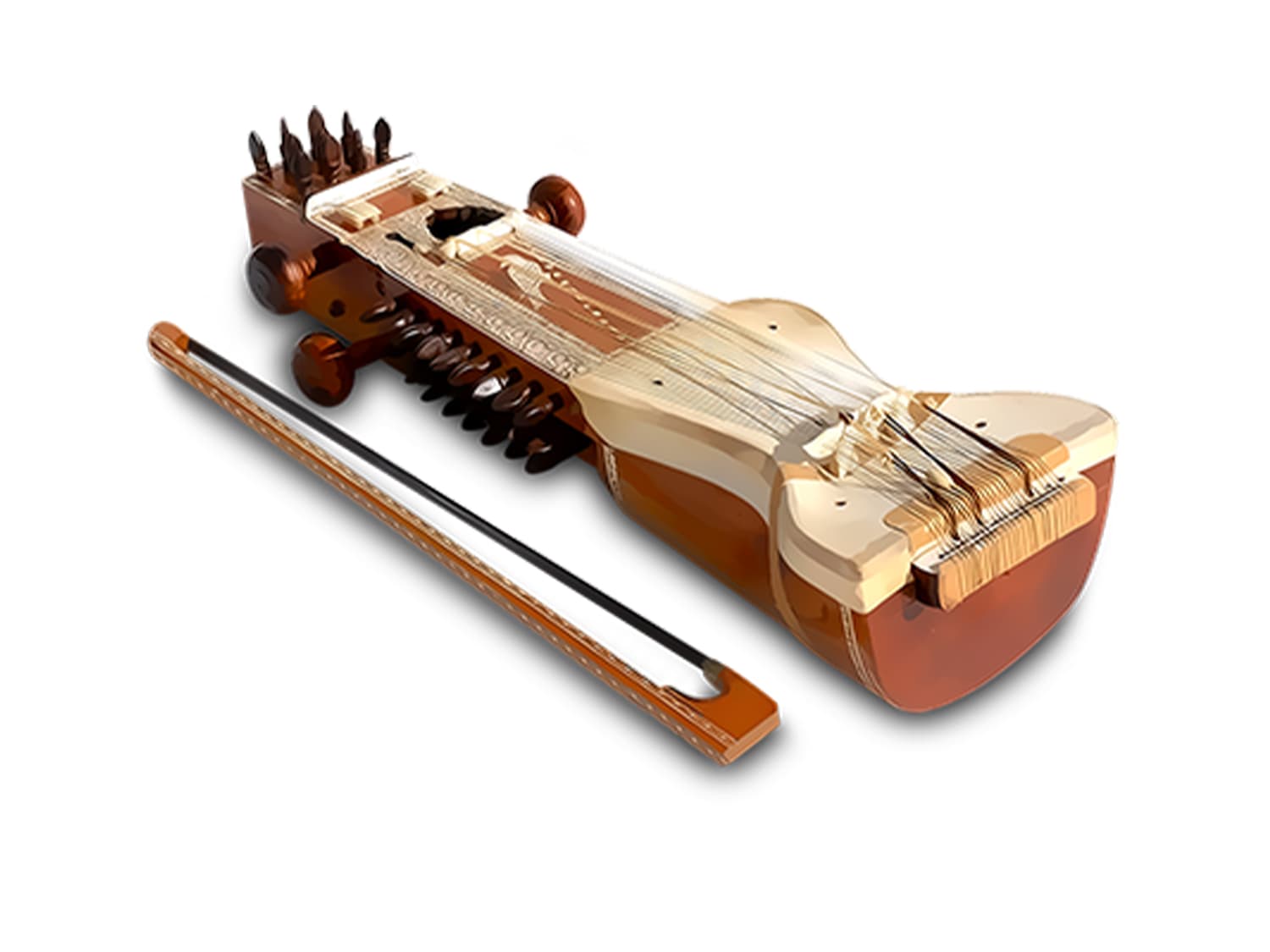
The sarangi is a bowed, short-necked stringed instrument that is widely used in Indian classical music. The name "sarangi" is derived from two Hindi words: "sau," which means 100, and "rang," which means color. The name refers to the instrument's ability to produce a wide range of tonal colors and expressive nuances.
The sarangi is played with a bow made of horsehair and has three or four main strings and a number of sympathetic strings that are not played directly but vibrate in response to the played strings. The instrument is held upright on the player's lap and the strings are pressed down with the nails of the left hand while the bow is drawn across the strings with the right hand.
The sarangi has a rich and unique sound that is often compared to the human voice. It is used both as a solo instrument and as an accompaniment to vocal music and is considered one of the most difficult Indian instruments to master. Despite this, the sarangi remains a popular and highly valued instrument in Indian classical music.
Violin (used in Indian classical music as well)
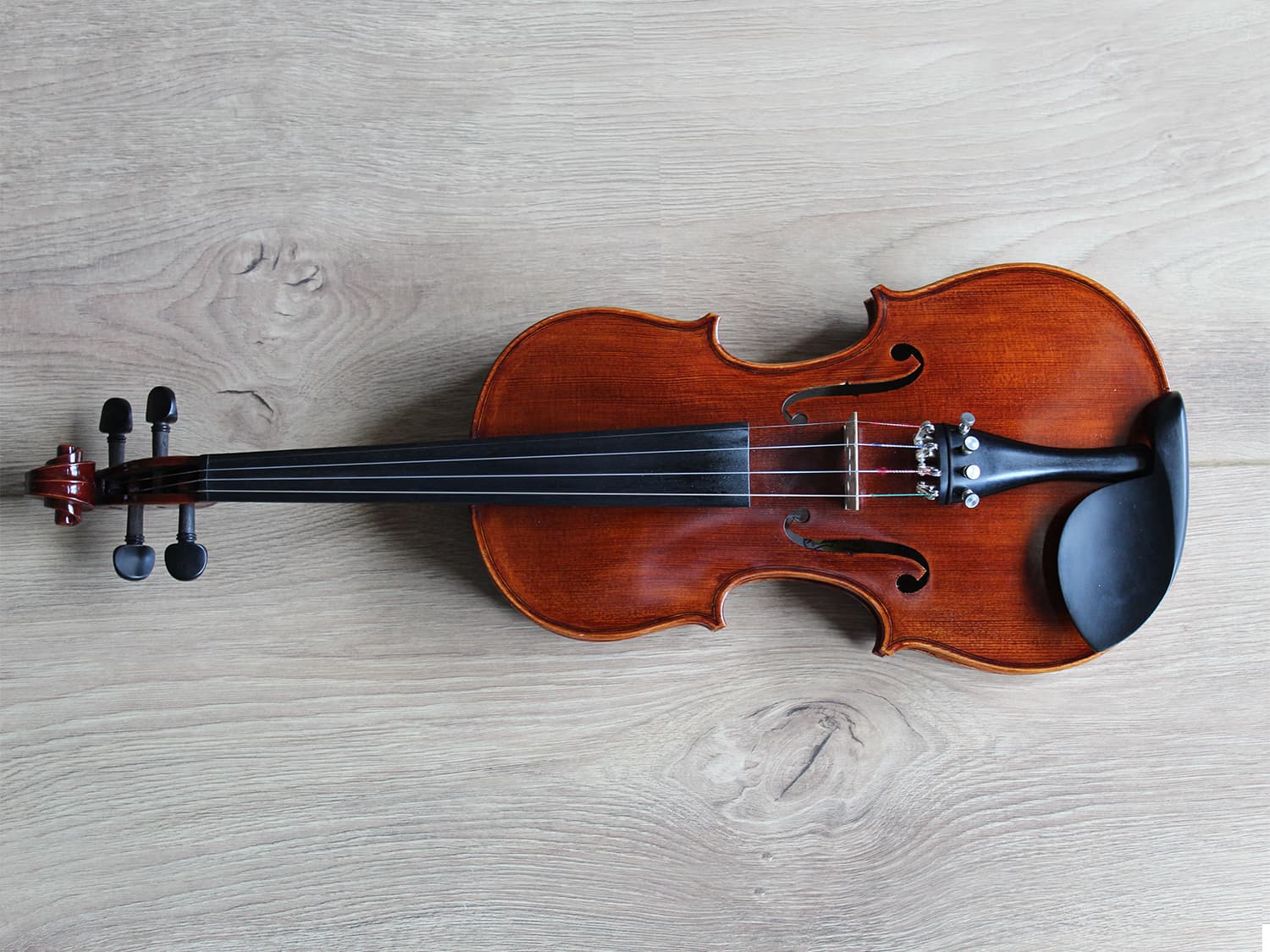
The violin, also known as the fiddle, is a stringed instrument that originated in Europe but has been widely adopted in Indian classical music. The instrument has a distinctive hourglass shape and is played with a bow made of horsehair. It has four strings that are tuned in perfect fifths, and the player presses the strings down onto the fingerboard to change the pitch.
In Indian classical music, the violin is often used as a solo instrument and also as an accompaniment to vocalists and other instruments. It can produce a wide range of sounds, from a soft and gentle tone to a sharp and piercing sound. The violin has become an important part of the Indian classical music scene and has been adapted to suit the style of Indian music, with musicians developing unique playing techniques and adding embellishments to the traditional Western style of playing.
Wind Instruments (Sushir Vadya)
Bansuri/Flute
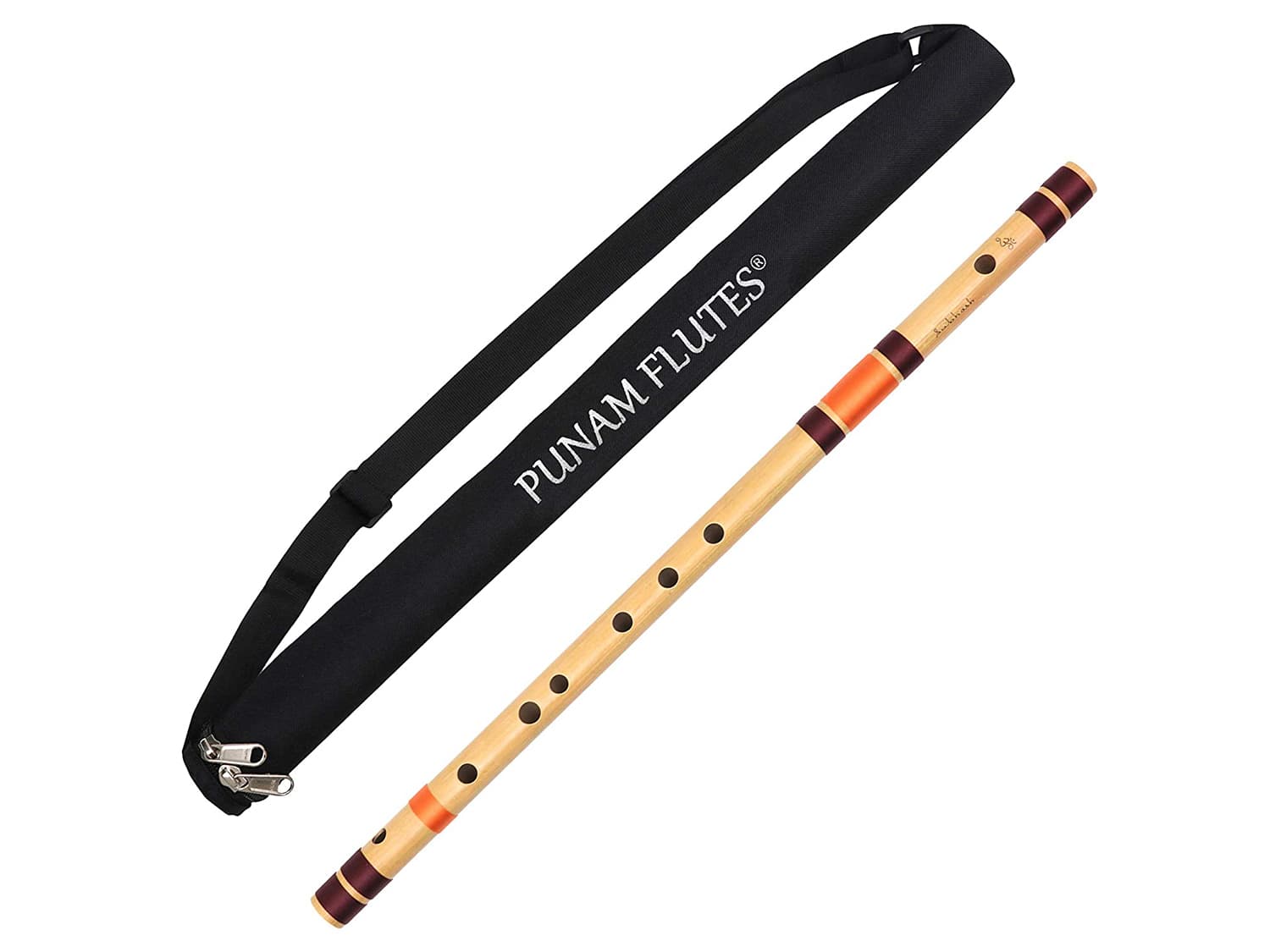
The bansuri, also known as the flute, is a traditional Indian wind instrument that has been used for centuries. It is made of bamboo and consists of six or seven finger holes, a blowing hole, and a range of about two octaves. The player holds the bansuri horizontally and blows across the blowing hole, producing a soft and melodious sound.
The bansuri is commonly used in Indian classical music, devotional music, and folk music. It is also used in Bollywood film music and has gained popularity worldwide. The simplicity and versatility of the bansuri have made it a popular instrument among musicians and music lovers. The music produced by the bansuri has a calming effect on the mind and is said to induce a meditative state. It is often used for yoga and meditation practices and is a must-have instrument for any Indian music enthusiast.
Also Read: Best Flute for Beginners in India
Shehnai
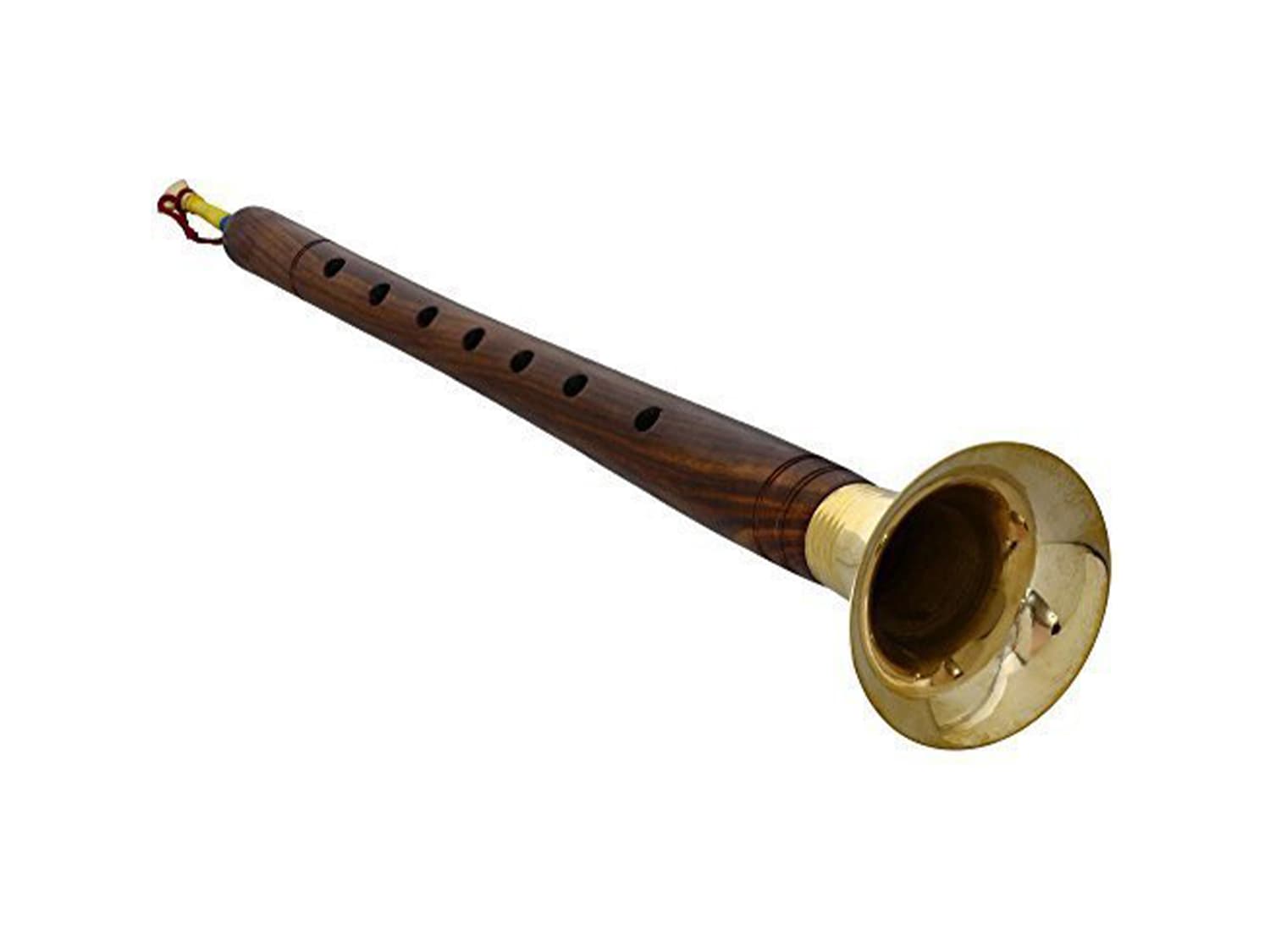
The shehnai is a popular Indian wind instrument that has a distinctive sound and is widely used in Indian classical music. It is a type of oboe, consisting of a long wooden tube with a flared end and several finger holes. The shehnai is made of a single piece of wood and is usually around 16-22 inches in length. It is played by blowing air through a double reed, which is attached to the top of the instrument.
The shehnai is typically used in Indian weddings and other auspicious occasions, and its high-pitched sound is said to create a festive and celebratory atmosphere. The instrument has been used in Indian music for centuries and has evolved over time, with different regional styles and playing techniques. Some of the famous shehnai players include Bismillah Khan and Ali Ahmed Hussain Khan.
Harmonium
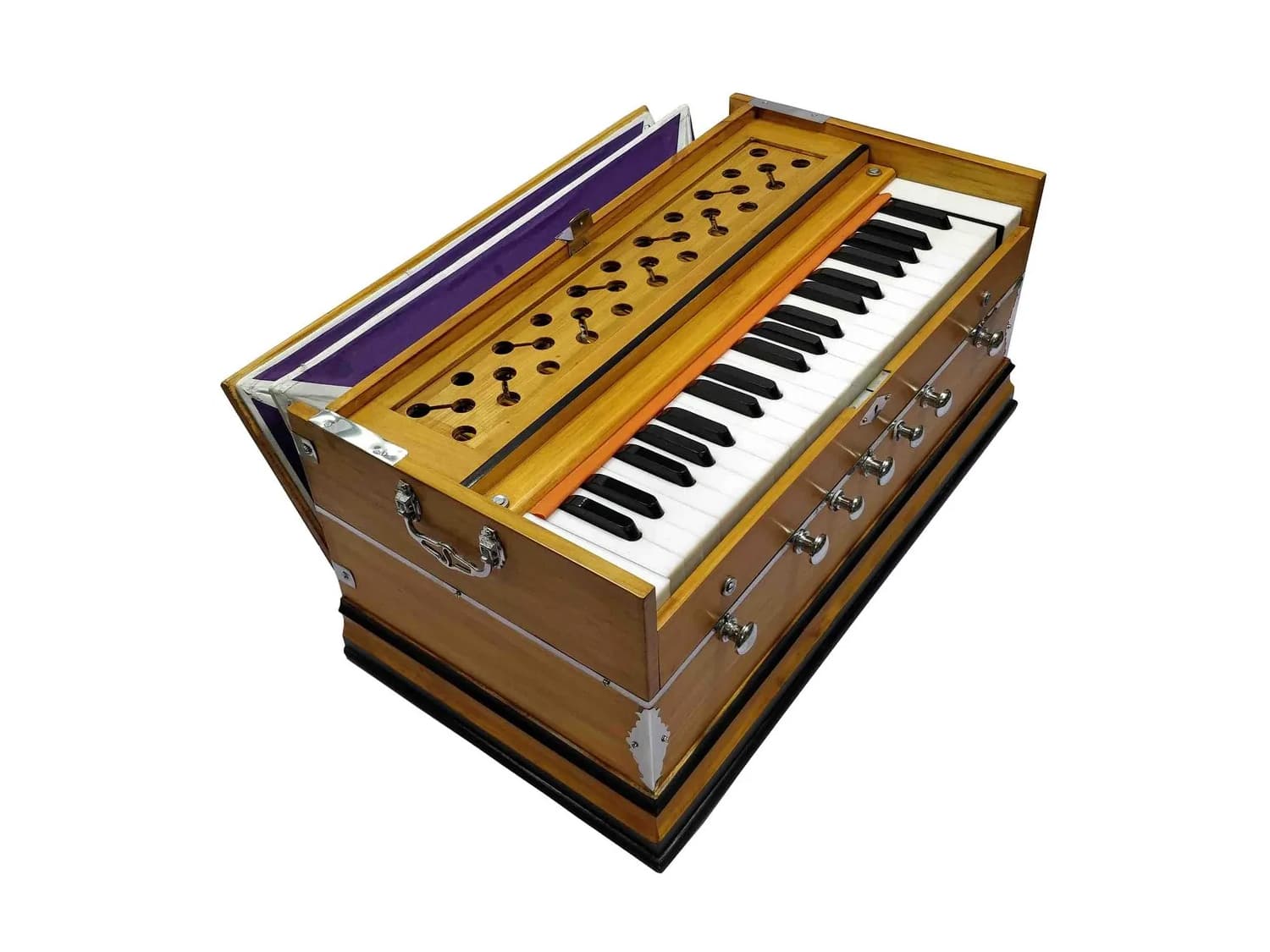
Harmonium is a keyboard instrument that is widely used in Indian classical, devotional, and folk music. It is a type of reed organ that produces sound by air passing through metal reeds, which vibrate when air is pumped into the instrument by foot-operated bellows. The harmonium was introduced to India during the mid-19th century by British missionaries, and it quickly became a popular instrument in Indian music due to its portability and ability to produce a range of sounds.
In Indian classical music, the harmonium is used primarily as an accompaniment instrument to provide a drone (continuous sound) and to play chords. It is also used in devotional music such as bhajans and kirtans, and regional folk music.
The harmonium is played by sitting on the ground with the instrument placed on the lap. The player pumps the bellows with one hand while playing the keys with the other hand to produce the desired melody and rhythm. The harmonium is an important instrument in Indian music and has been adapted to suit the unique styles of different regions and genres.
Nadaswaram
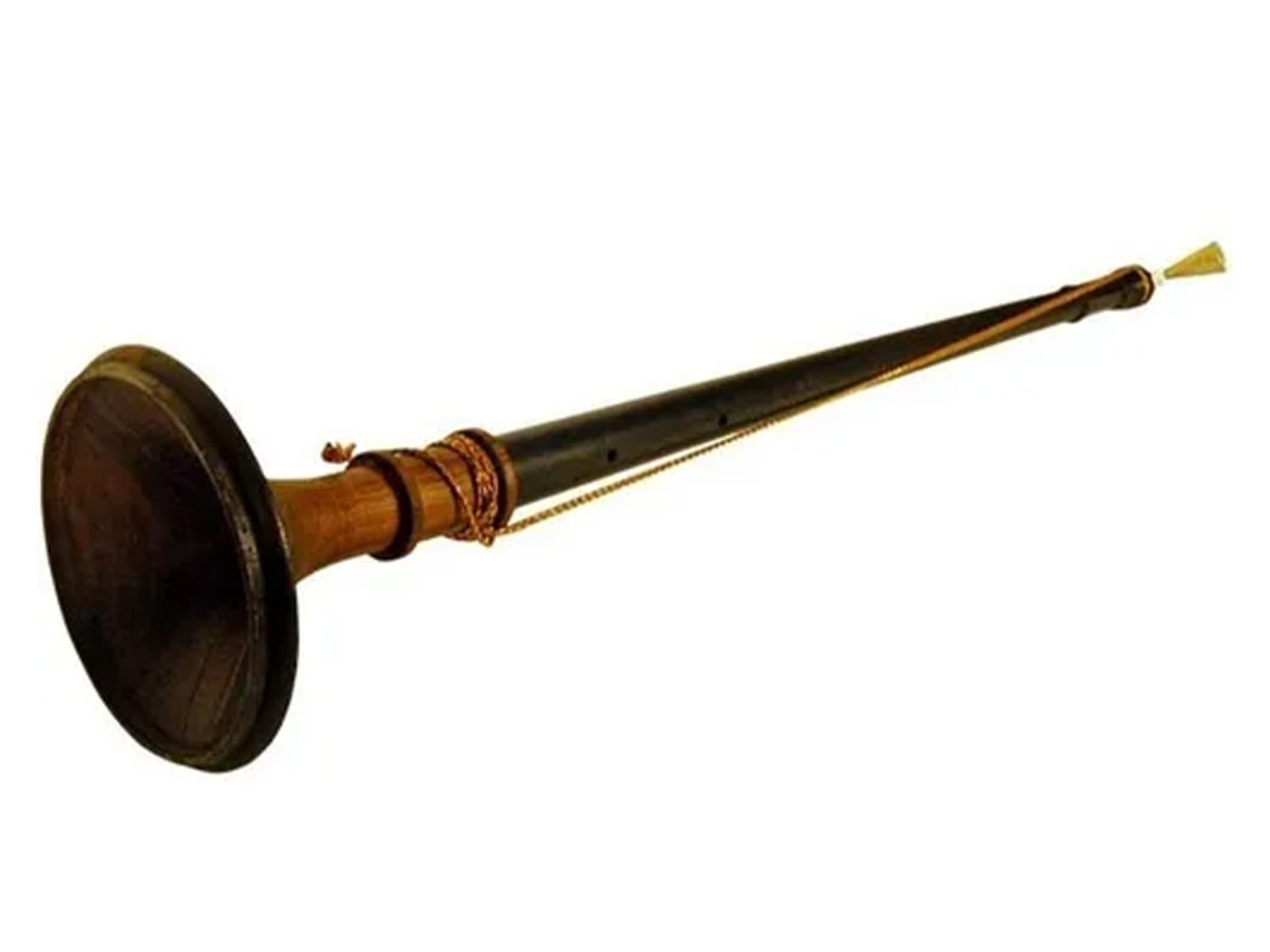
Nadaswaram is a popular wind instrument that is commonly used in South Indian classical music, particularly in the state of Tamil Nadu. It is a long, cylindrical-shaped instrument made of wood, with a flaring bell at one end and a double reed at the other. The instrument is played by blowing air into the reed, which vibrates to produce the sound. The sound of the nadaswaram is bright and resonant, with a distinctive timbre that sets it apart from other wind instruments. The nadaswaram is often played in pairs, with one musician playing the melody and the other playing the drone, providing a rich and full sound. It is a difficult instrument to play and requires years of training and practice to master. The nadaswaram has been an integral part of Indian classical music for centuries and continues to be a popular instrument in South India.
Pungi
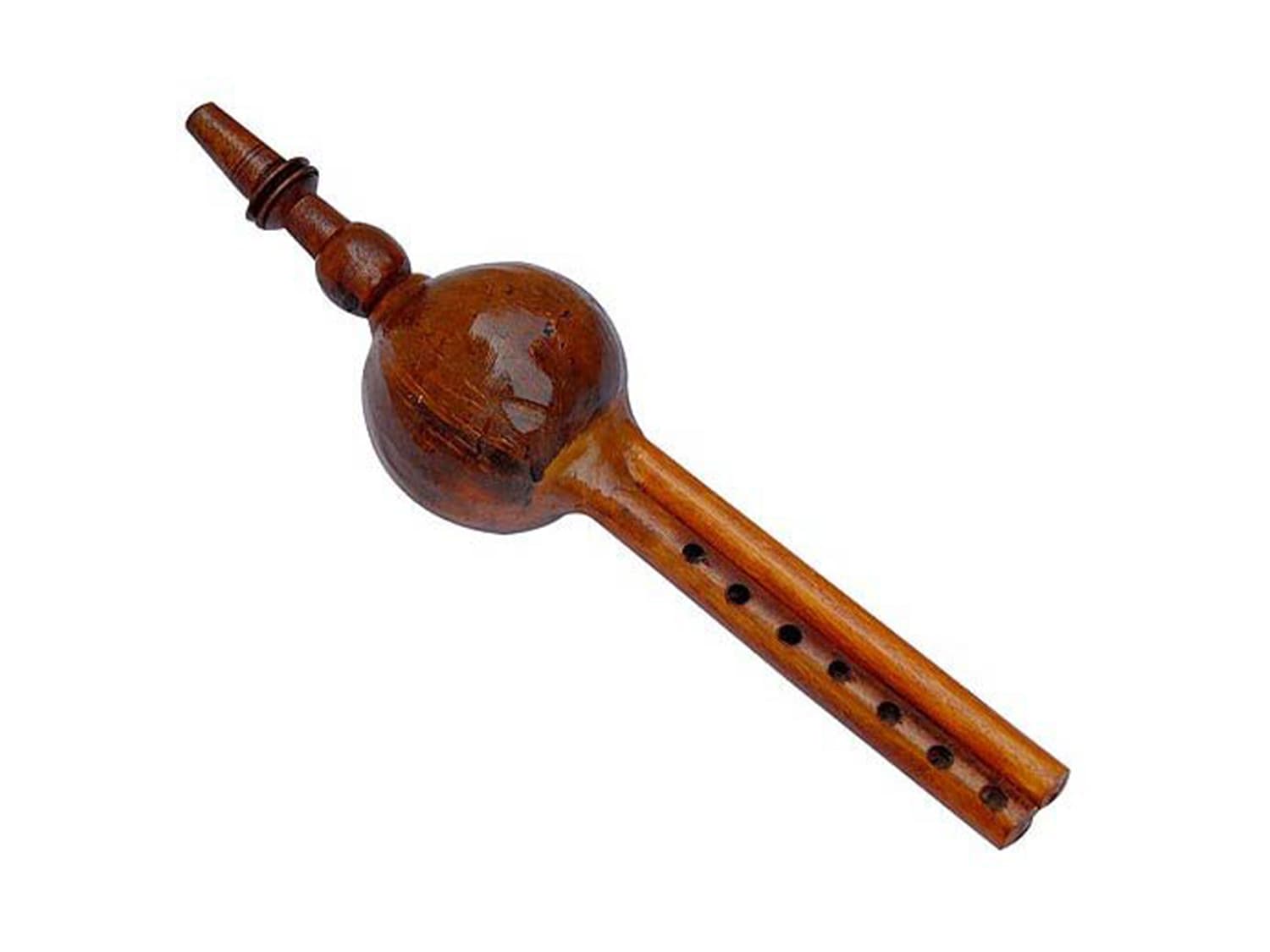
Pungi is a wind instrument that is widely used in India, especially in rural areas. It is also known as a snake charmer's instrument due to its association with the traditional practice of snake charming. The pungi is made of a long bamboo pipe with a gourd attached to one end, which serves as a resonator. The player blows air through the pipe, producing a sound that can be modulated by covering and uncovering finger holes. The pungi is typically played with a pair of drums called dholak or nagara, providing a rhythmic accompaniment to the melody. Despite its limited range and relatively simple construction, the pungi has a unique and distinctive sound that adds a rustic charm to traditional Indian music. However, it is important to note that the practice of snake charming is now banned in India due to animal welfare concerns, and the pungi is primarily used in folk and classical music performances.
Been
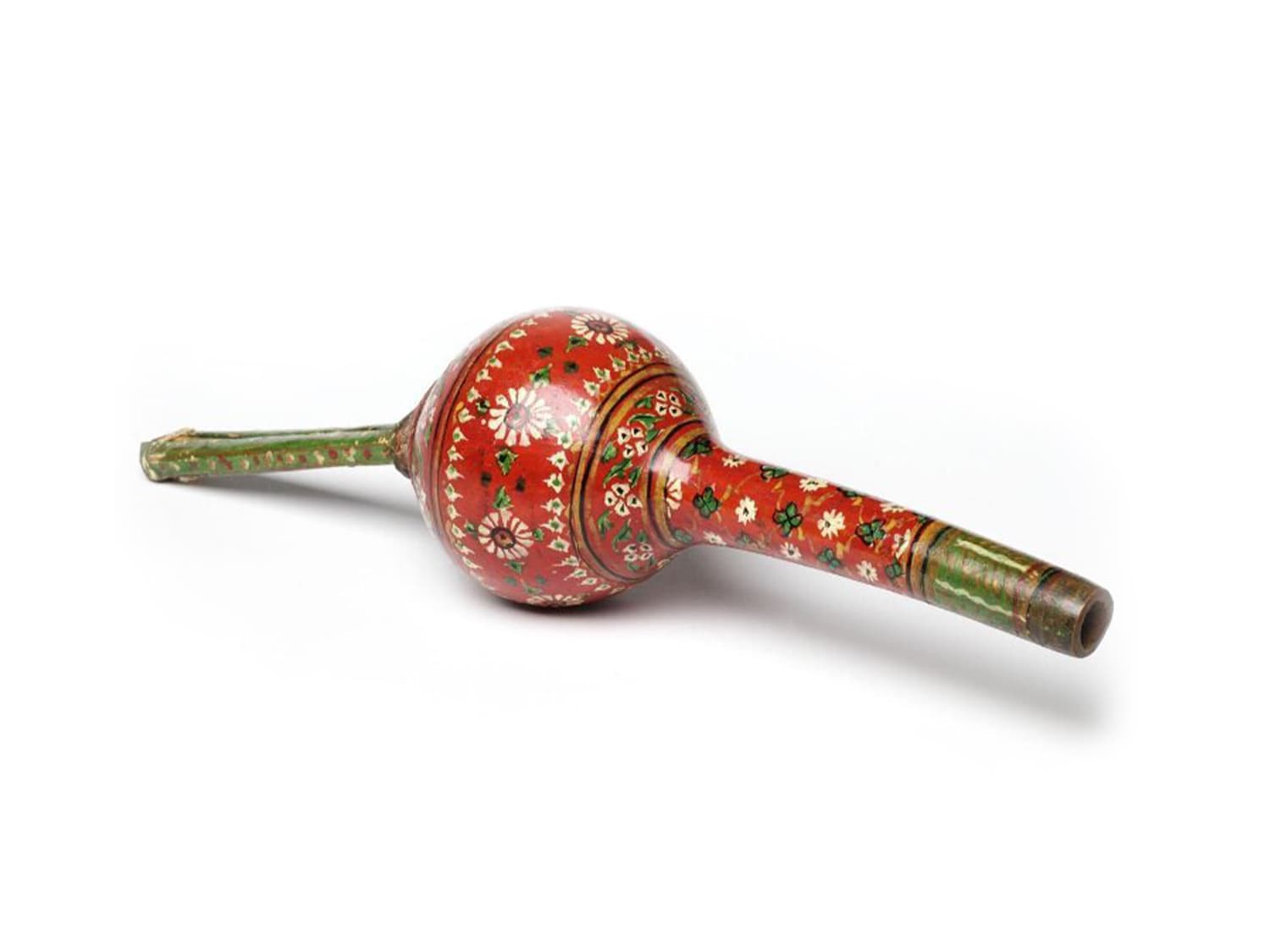
The been is a long, cylindrical wind instrument that is commonly used in North Indian classical music. It is a type of snake charmer's instrument that is made from a single piece of wood or bamboo, with seven finger holes and a bell-shaped opening at the bottom. The been is played by blowing air into the instrument while simultaneously covering and uncovering the finger holes to create different notes and melodies.
The been has a distinctive and haunting sound that is often associated with snake charmers and Indian folk music. It is also used in classical music performances, particularly in the north Indian genre of music known as Hindustani music. The been is a challenging instrument to play, requiring a lot of breath control and skill to produce the right notes and pitches. Despite this, it remains a popular and unique instrument that is beloved by many in India and around the world.
Kombu
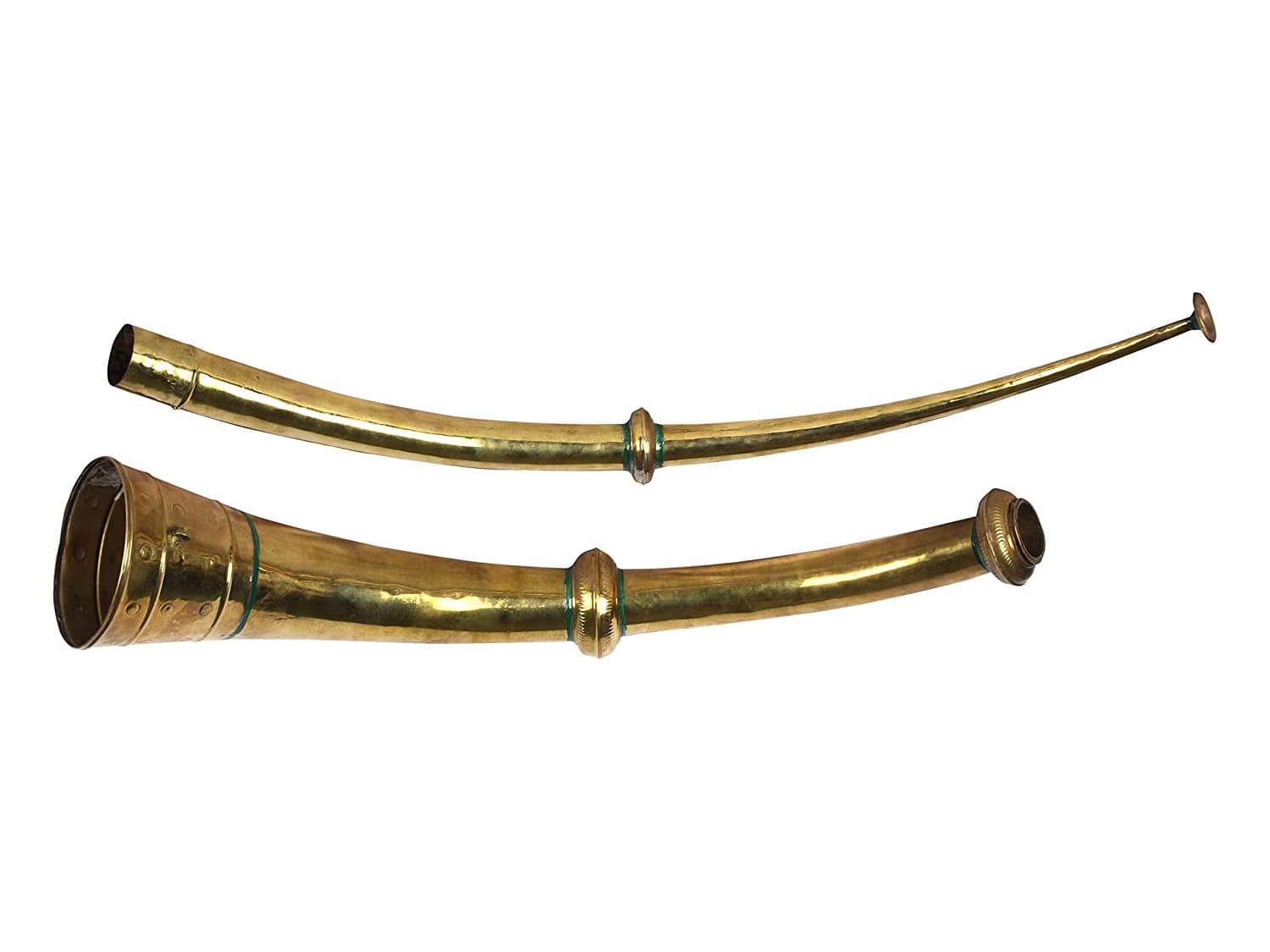
Kombu is a traditional wind instrument that is commonly used in South India, particularly in the state of Kerala. It is a long, straight, and narrow brass pipe that is played by blowing air into it through a small mouthpiece. The Kombu produces a loud and sharp sound that is said to resemble the call of a bull.
In traditional Kerala music, the Kombu is used to provide a distinct rhythm and to accompany the Chenda, a cylindrical percussion instrument. It is also used in various folk and ritualistic performances in the region. The Kombu is traditionally played by men, and it is often used in processions and festivals.
In recent years, the Kombu has gained popularity among contemporary musicians, and it is now being used in fusion music as well. The unique sound and versatility of the Kombu make it a popular choice among musicians who are looking to incorporate traditional Indian instruments into their compositions.
Percussion Instruments (Avanaddh Vadya)
Tabla
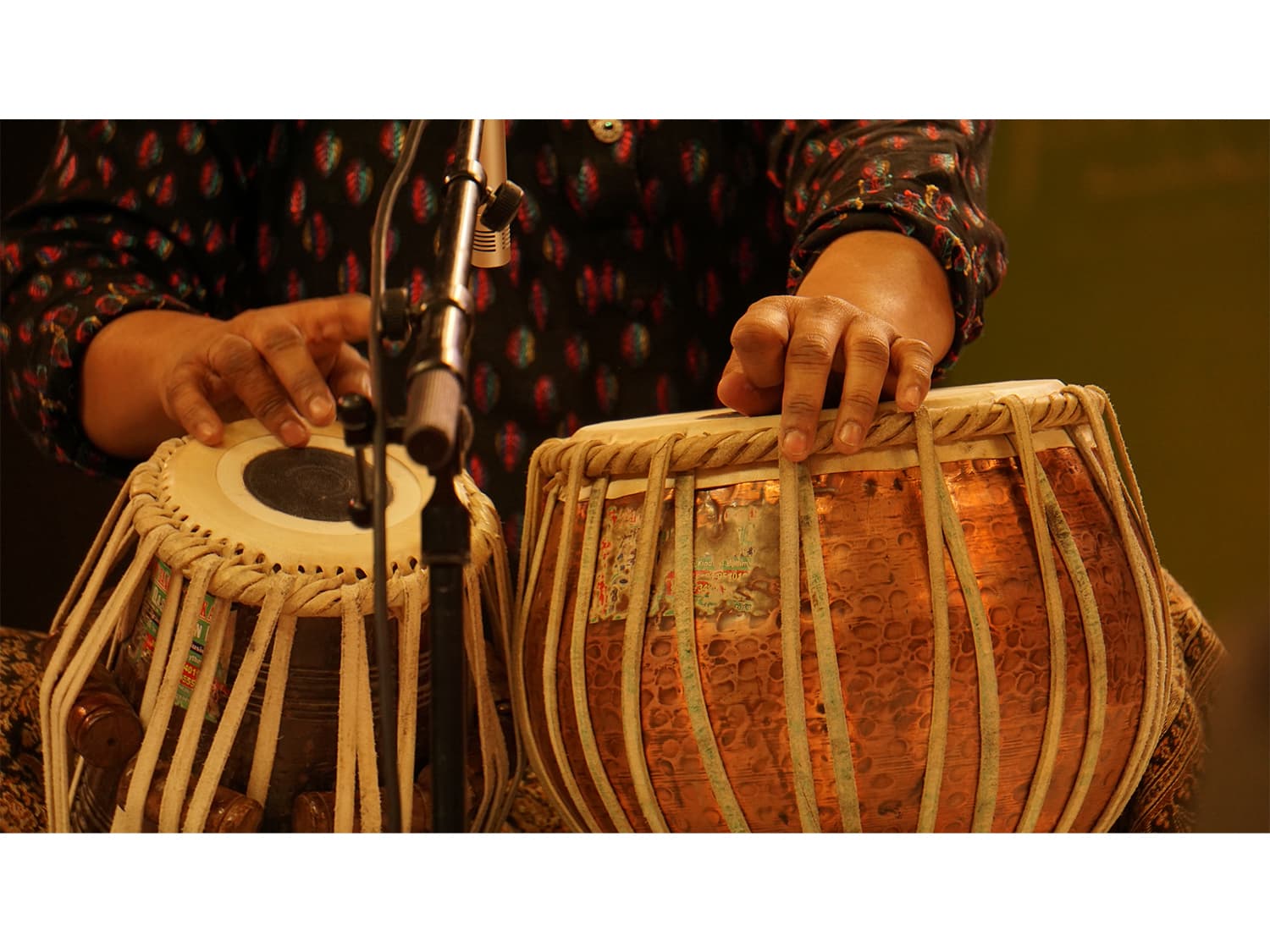
Tabla is a popular percussion instrument in India, commonly used in Hindustani classical music and other genres. It consists of a pair of hand drums of different sizes and timbres - the smaller drum is called the Dayan, while the larger one is called the bayan. The Dayan is played with the dominant hand and produces higher-pitched sounds, while the bayan is played with the non-dominant hand and produces lower-pitched sounds. The player can produce a wide range of tones by striking the drums in different ways and using different finger techniques.Tabla has a complex rhythmic structure and is known for its intricate patterns and improvisation. It is often played solo, but can also be accompanied by other instruments or vocals. Tabla has been widely popularized around the world due to its unique sound and versatility.
Mridangam
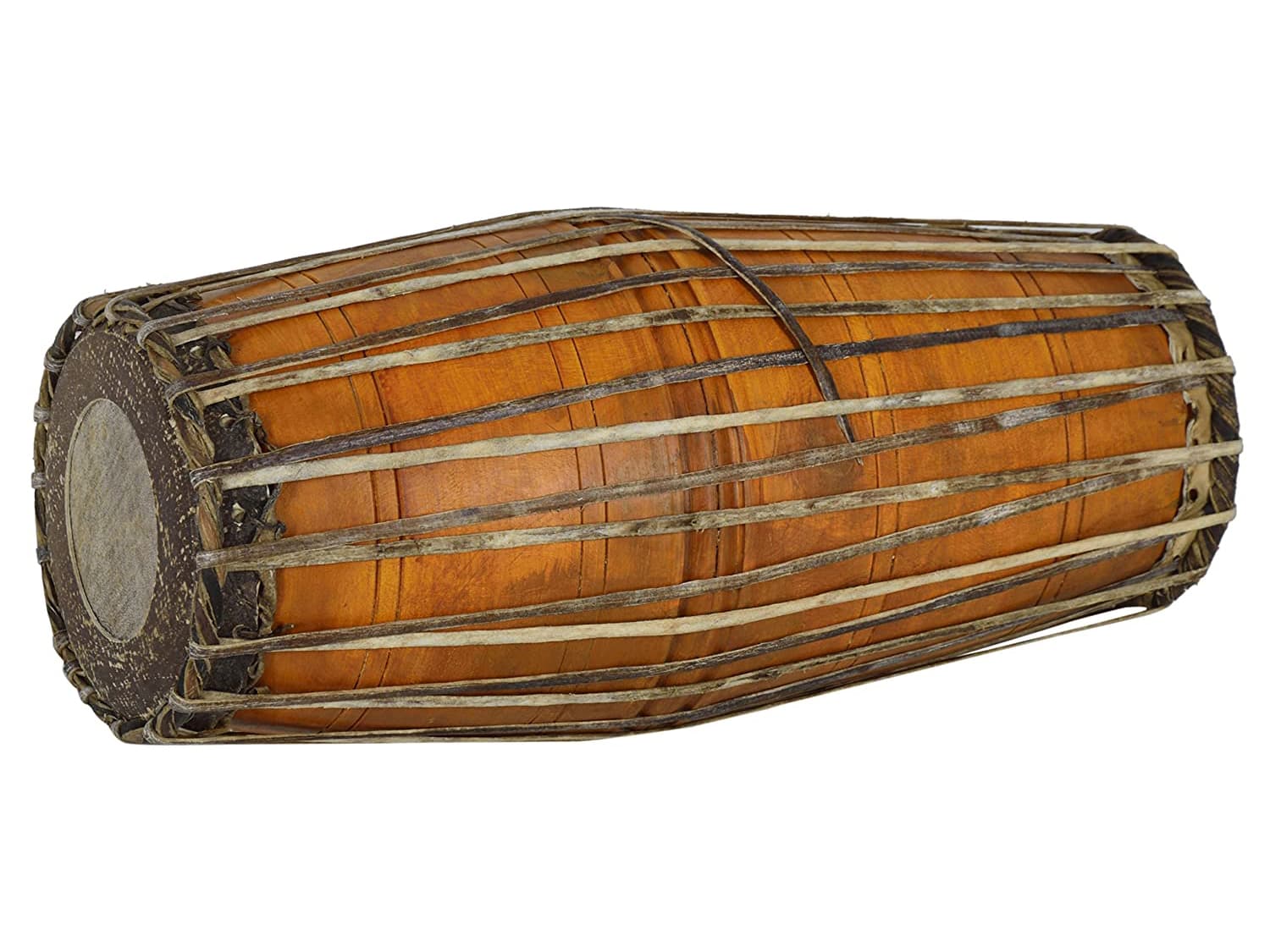
The Mridangam is a percussion instrument widely used in Carnatic music, which is the classical music of South India. It is a barrel-shaped drum made of a single block of wood, typically jackfruit or teak, with a goatskin head on both ends. The larger head, called the bass head, is played with the left hand, while the smaller head, called the treble head, is played with the right hand.
The Mridangam has a unique tonal quality and is known for its ability to produce a wide range of rhythmic patterns. It is often played as an accompaniment to the veena, flute, or violin, and is also used in dance performances.
The instrument is played while sitting cross-legged on the floor, and the player uses a combination of finger and palm strokes to produce the desired rhythm. It requires a high level of skill and practice to master the Mridangam and is considered one of the most important instruments in Carnatic music.
Dholak
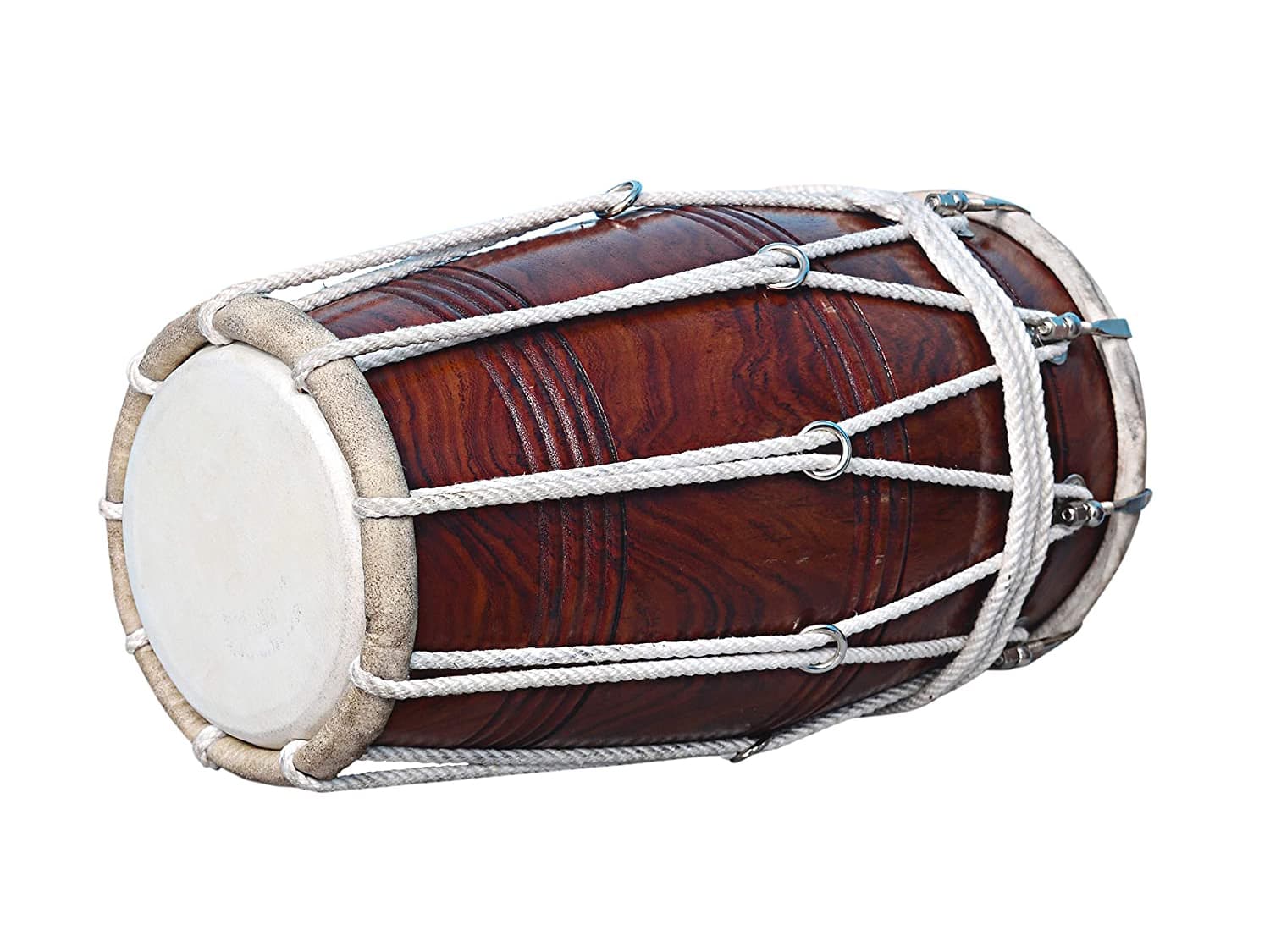
The dholak is a popular folk percussion instrument from India that is widely used in various genres of music. It is a two-headed drum that has a cylindrical body made of wood or fiber. One side of the drum is played with the fingers and palm, while the other side is played with a stick. The sound of the dholak is warm and deep, making it suitable for accompanying traditional Indian music and dance performances.
The dholak is played by holding it horizontally across the lap or placing it on the floor. The player strikes the drumhead with their fingers, palm, and stick, producing a range of sounds, including bass, tone, and slap. The dholak is a versatile instrument that can produce a variety of rhythms and patterns, making it a favorite of musicians and percussionists in India and around the world. It is commonly used in genres like folk music, bhajan, qawwali, and bhangra.
Pakhawaj
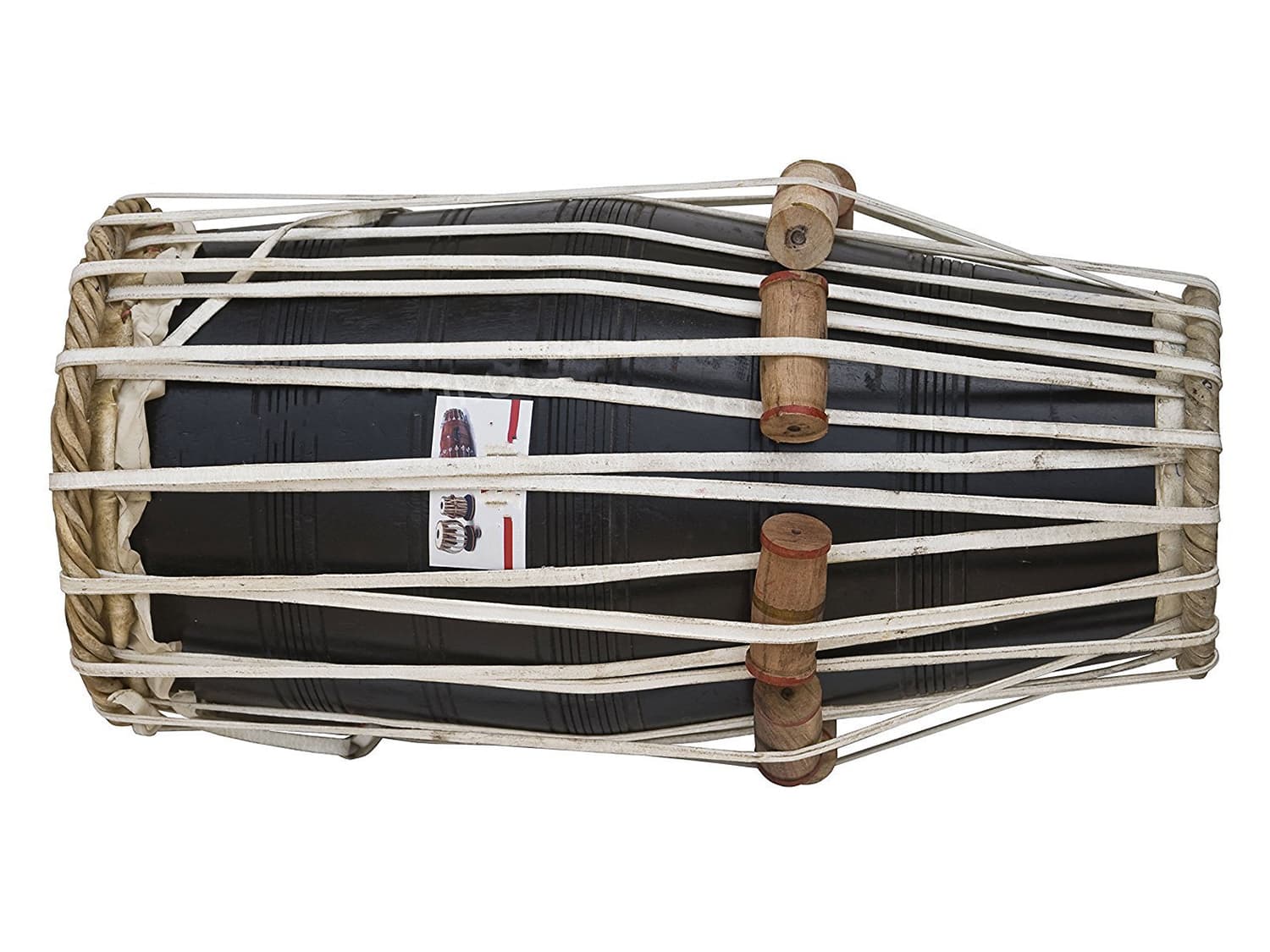
The Pakhawaj is a barrel-shaped Indian drum that is widely used in classical, devotional, and folk music. It is also known as Mridanga in South India. It is a two-headed drum, with the smaller head called 'Dagga' and the larger head called 'Bayan.'
The Pakhawaj is traditionally made of wood, clay, and cowhide, and is played with both hands using various techniques to produce a range of sounds. It is often used to accompany the dhrupad style of singing and is also used in the accompaniment of devotional music and dance forms like Kathak and Bharatanatyam.
In classical music, the Pakhawaj is played solo as well as in an ensemble with other percussion instruments like the tabla, mridangam, and dholak. It has a unique tone and can produce a deep bass sound, making it a versatile instrument in Indian classical music. Today, it continues to be an important part of Indian music, with many famous musicians mastering its complex rhythms and techniques.
Ghatam
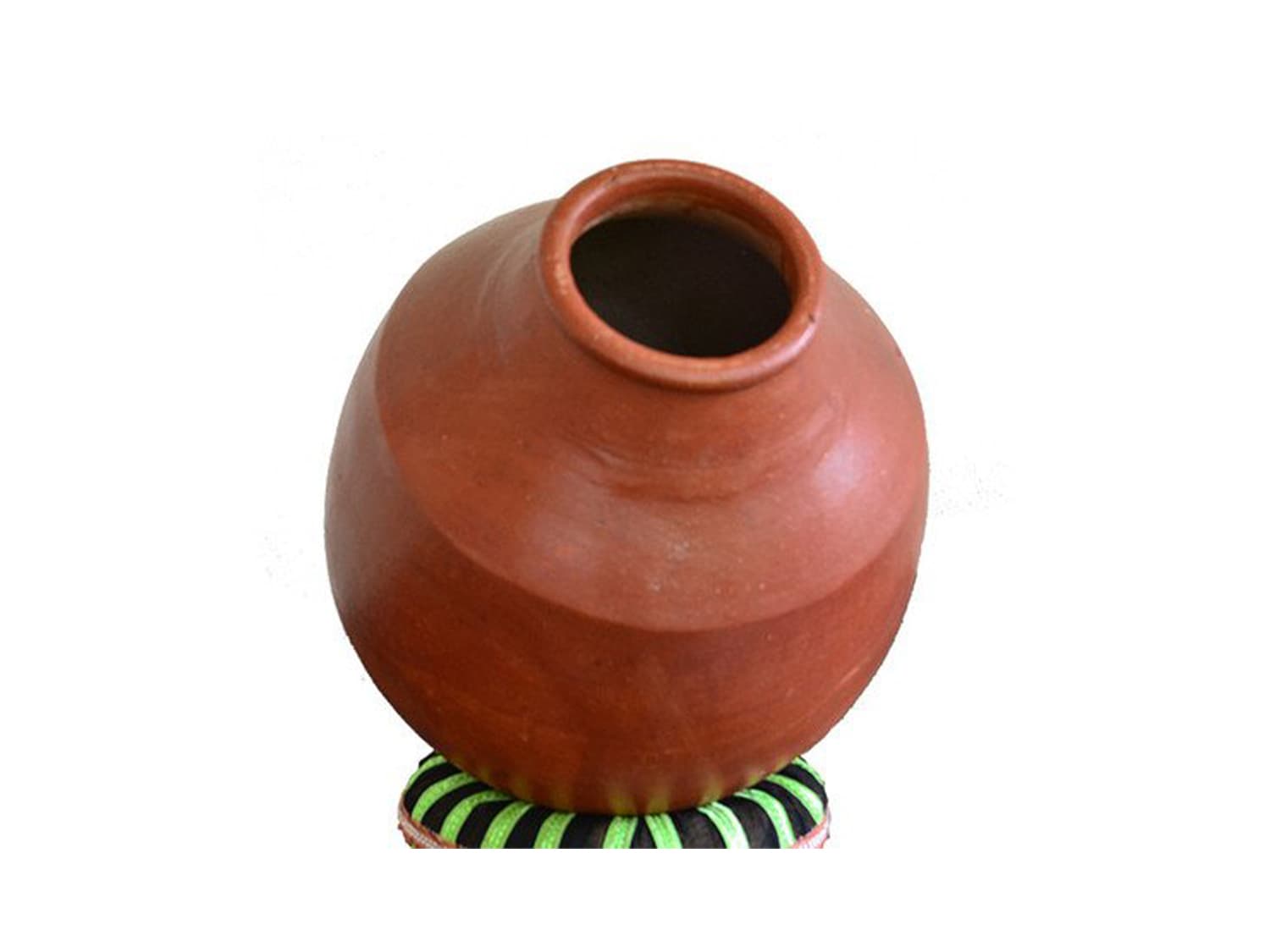
The ghatam is a percussion instrument used in Indian classical music, specifically in Carnatic music. It is a clay pot with a narrow mouth and a wide body. The pot is made of baked clay or brass, and its surface is played with the fingers and palms to produce a variety of sounds. The ghatam is typically played while seated on the floor, and the player holds the pot between their legs. It is usually played as an accompaniment to other instruments such as the mridangam, tabla, or kanjira, and is known for its deep and resonant sound. The ghatam is an important instrument in Indian music and is often used in performances and recordings. Its unique sound and versatility make it a popular choice for percussionists in both traditional and contemporary music.
Khanjira
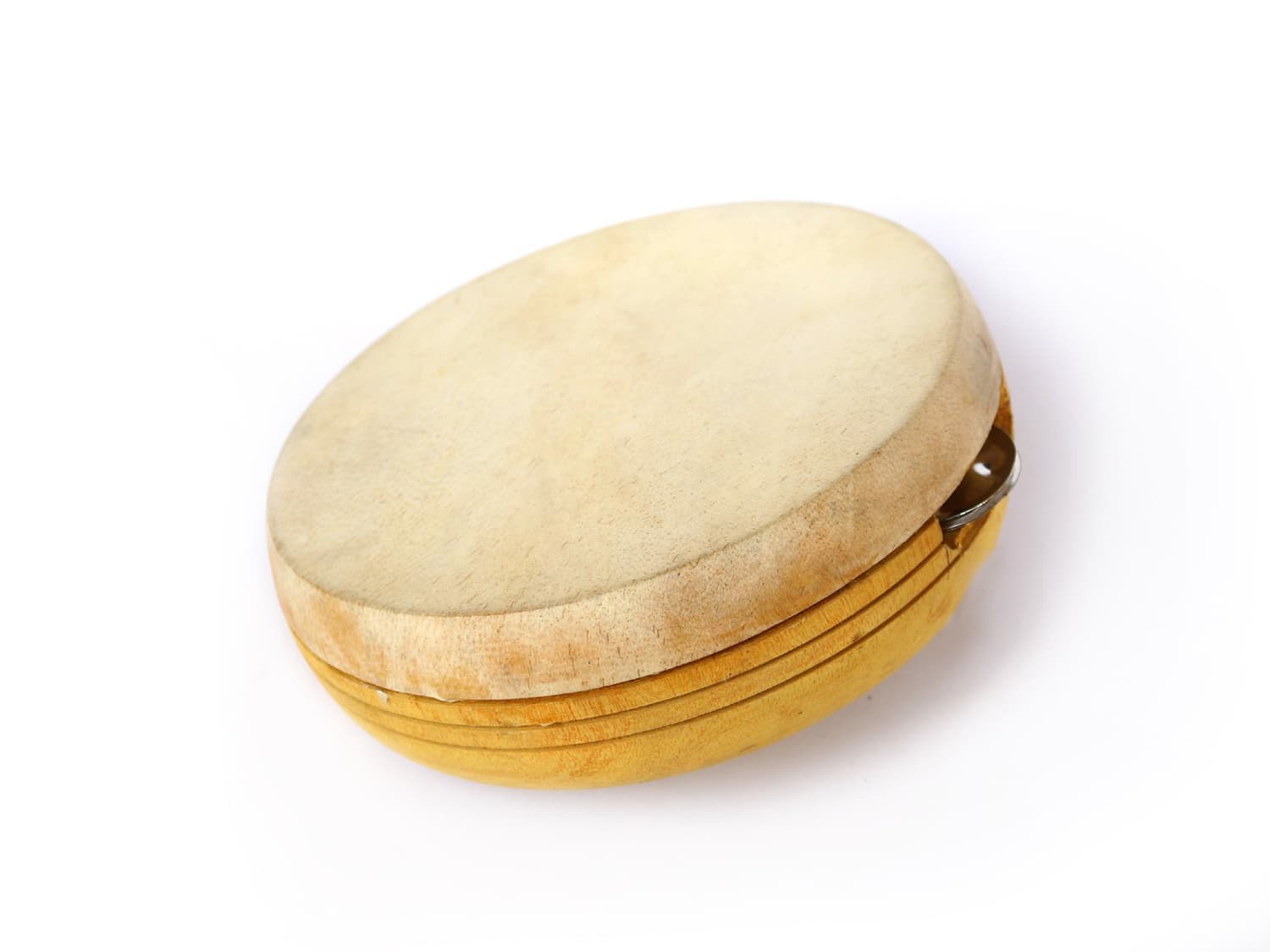
Khanjira, also known as kanjira, is a small frame drum that is widely used in South Indian classical music. It is similar to the tambourine but smaller in size and has a single head made of monitor lizard skin. The body of the instrument is usually made of jackfruit wood, and it has a small brass disc on one side that can be struck to produce a jingling sound.
Khanjira is played with one hand, and the player can produce a wide range of sounds by varying the pressure and angle of the hand on the drumhead. It is often used to provide a rhythmic accompaniment to other instruments such as the mridangam or the ghatam. Khanjira is also played solo, where the performer can showcase the drum's intricate rhythms and improvisational skills.
Despite its small size, the khanjira plays an essential role in South Indian classical music and has gained popularity in other genres as well. Its unique sound and versatility make it a popular choice among percussionists and music enthusiasts.
Naal
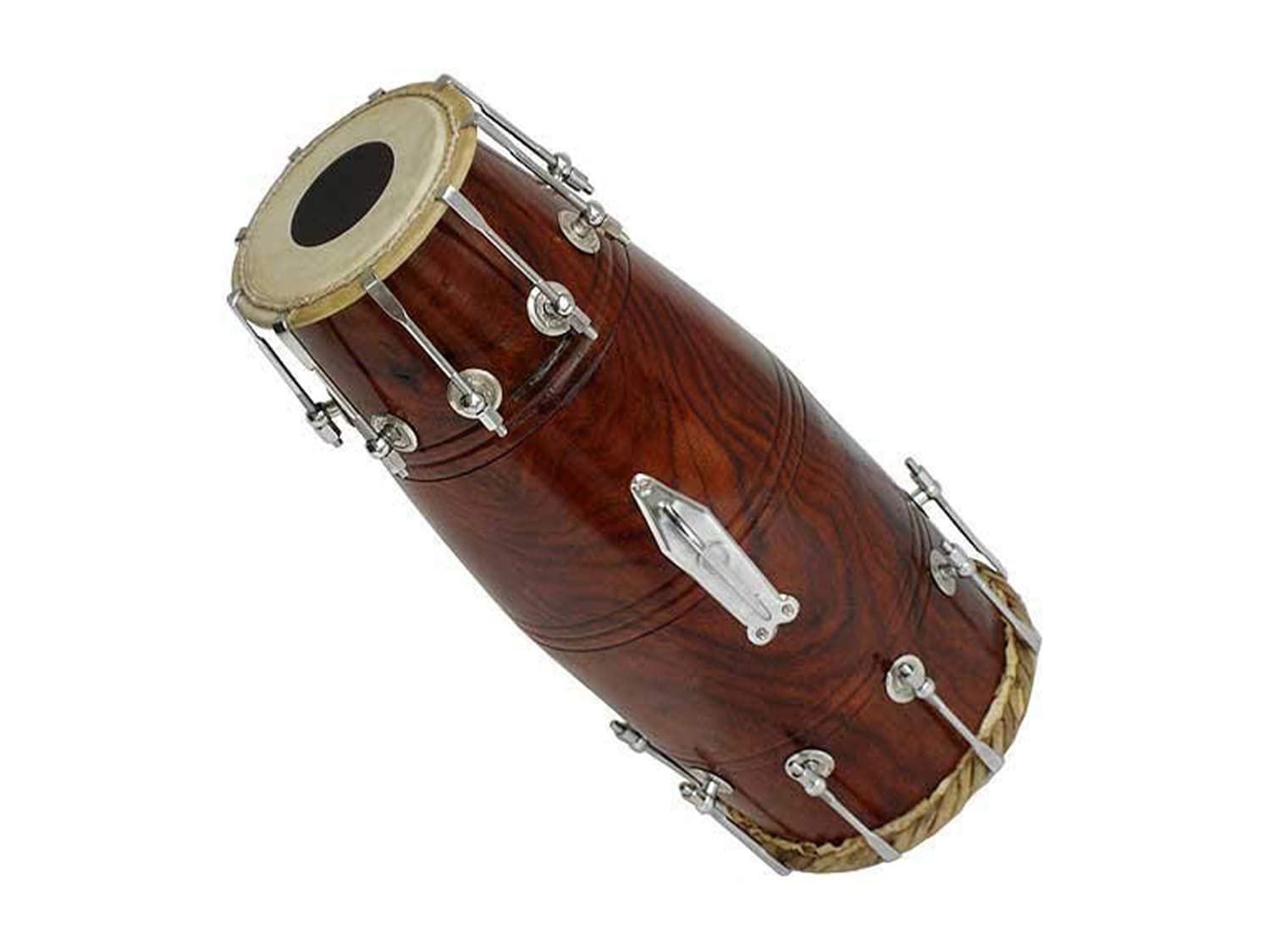
The Naal is a percussion instrument that is widely used in classical Indian music, particularly in the North Indian style of music known as Hindustani. It is also called the Nagara or Nakkara and is a cylindrical-shaped drum with a wooden body and two drumheads, one at each end. The larger drumhead produces a deeper sound, while the smaller one produces a sharper sound. The Naal is played with the hands, and the technique involves striking the drumheads with different parts of the hand, producing a range of sounds and rhythms.
The Naal is often used as an accompaniment to other instruments, such as the sitar or the sarod, and is also commonly used in devotional music and bhajans. It is known for its versatility and its ability to produce a wide range of sounds and rhythms, making it a popular instrument among percussionists and musicians alike.
Thavil
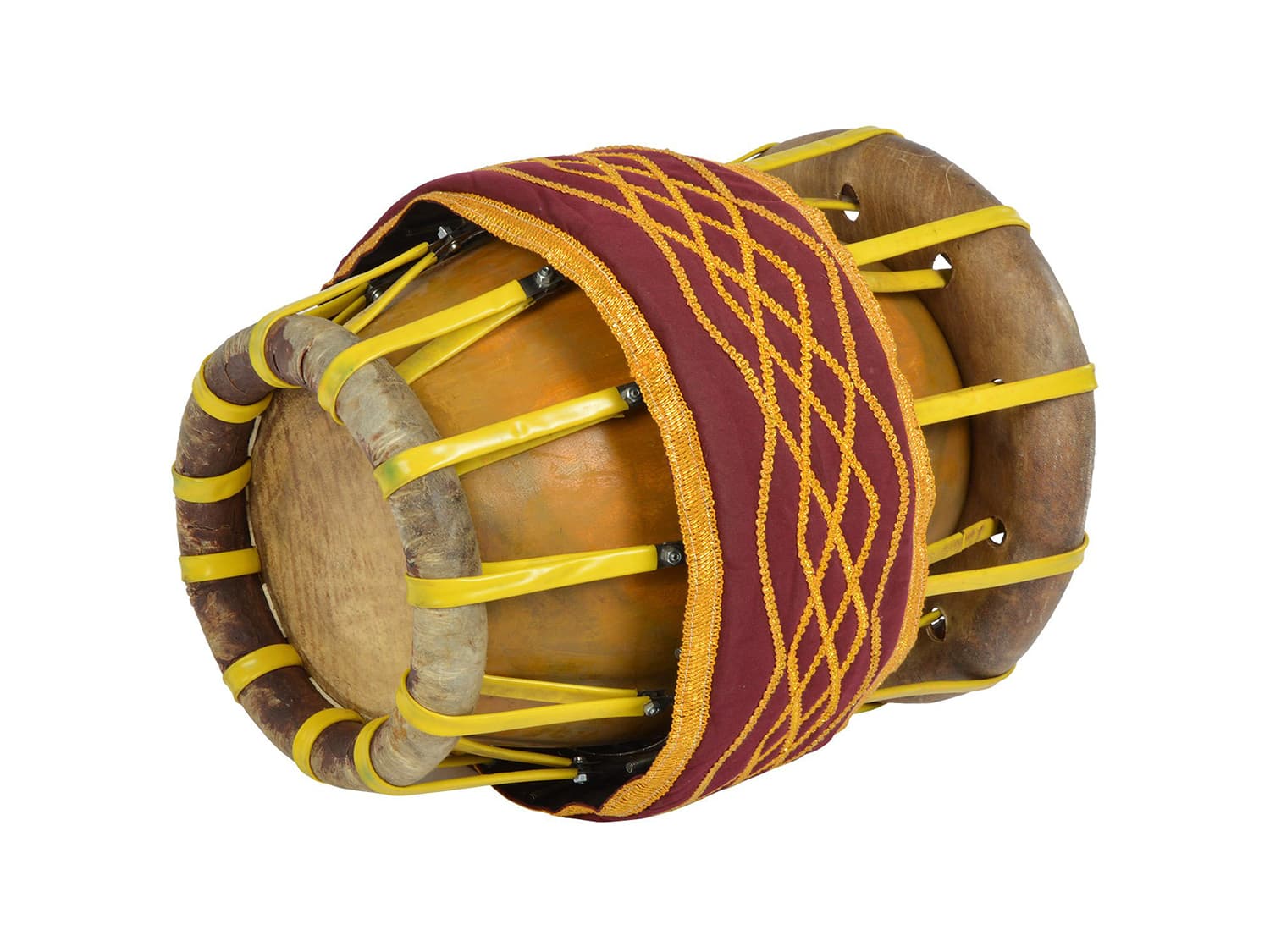
The Thavil is a popular percussion instrument used in South Indian classical music, particularly in the Carnatic music tradition. It is a barrel-shaped drum made of jackwood and animal skin. The drum is about two feet in length, and the playing surface is about a foot in diameter. The right side of the drum is played with the hand, while the left side is played with a stick made of the same jackwood. The Thavil produces a rich, resonant sound that is used to create complex rhythms and accompanies melodic instruments like the violin and flute. It is often played in pairs, with one musician playing the high-pitched Thavil and the other playing the lower-pitched Thavil. The instrument requires a great deal of skill and practice to master, as it requires the player to coordinate between the two sides of the drum and maintain a steady tempo throughout the performance.
Chenda
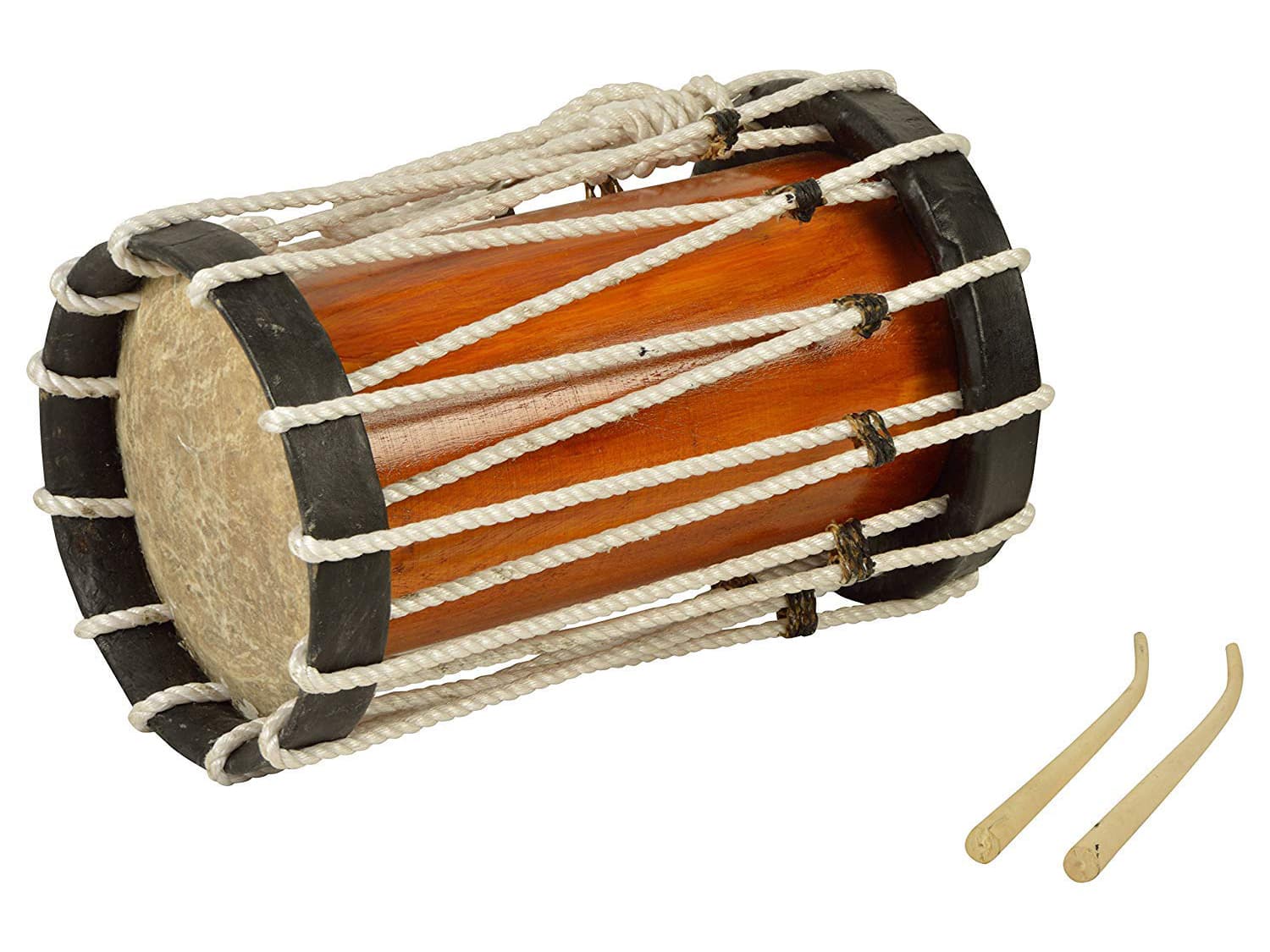
The Chenda is a percussion instrument that originates from the southern Indian state of Kerala. It is a cylindrical drum made out of jackfruit wood and has a diameter of around 1.5 feet. The Chenda is played using two sticks made out of bamboo, one of which is thicker than the other. The thicker stick is used to create the bass sound, while the thinner stick is used to create the treble sound.
The Chenda is an important instrument in traditional Kerala art forms like Kathakali, where it is used to provide rhythm for the dancers. It is also used in temple festivals and other religious ceremonies. The Chenda is an instrument that requires a lot of skill to play, and it is usually played by trained professionals. The sound of the Chenda is loud and powerful, and it is often used to create a sense of grandeur and spectacle in performances.
Dhak
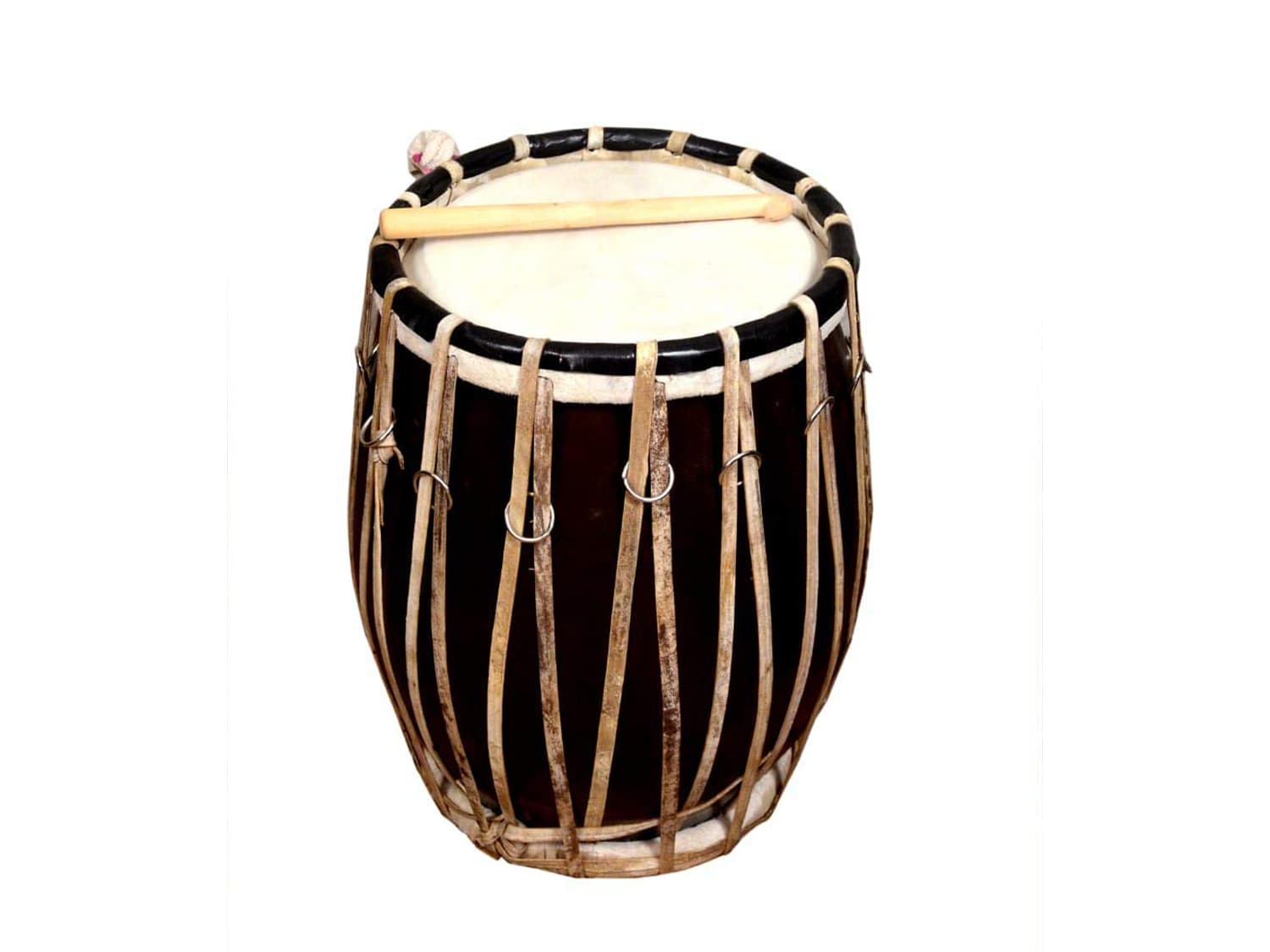
The Dhak is a large, two-headed drum used in Indian music, particularly in the folk music of Bengal. It is played with two wooden sticks, and its distinctive deep, resonant sound is used to create the rhythm and beat of many traditional songs and dances.
The drum is typically made from wood and animal skin and is often decorated with colorful patterns and designs. It is an integral part of many festivals and ceremonies and is especially prominent during the Durga Puja festival in Bengal.
The playing of the Dhak requires skill and practice, as the drum must be struck with precision to produce the desired tone and rhythm. The player must also be able to adjust the tension of the drumheads to achieve the desired sound.
Overall, the Dhak is an important and distinctive instrument in Indian music and is a key element of many traditional musical performances.
Electronic Instruments (Vidyut Vadya)
Electronic musical instruments, also known as Vidyut Vadya in Indian classical music, have become increasingly popular over the years. These instruments produce sound electronically, as opposed to acoustic instruments that rely on the physical vibrations of strings or air columns.
Some of the most popular electronic musical instruments include keyboards, synthesizers, drum machines, and electric guitars. These instruments use advanced technologies such as MIDI (Musical Instrument Digital Interface) and digital sampling to produce a wide range of sounds and effects.
Electronic instruments have become an integral part of modern Indian music, especially in genres like film music and fusion music. Many popular Indian music composers and performers use electronic instruments extensively in their work.
Despite their modernity, electronic instruments have also been incorporated into traditional Indian classical music. For example, the electronic tanpura has become a popular alternative to the traditional acoustic tanpura, providing a consistent drone sound for vocalists and instrumentalists.
In conclusion, electronic musical instruments have revolutionized the world of music, including Indian classical music, by expanding the possibilities of sound creation and manipulation.
Learning to play Indian musical instruments
Benefits of learning to play Indian musical instruments
- Stress Relief: Playing music can help reduce stress and anxiety.
- Enhances cognitive skills: Learning an instrument can improve memory, concentration, and coordination.
- Promotes creativity: Playing music allows one to express themselves in new ways and promotes creative thinking.
- Cultural Connection: Playing an Indian musical instrument can help connect with Indian culture and traditions.
- Social Interaction: Playing in a group or band can promote social interaction and teamwork.
Tips for beginners
- Start with a basic instrument and then move on to more complex ones.
- Practice regularly and set a routine.
- Take guidance from a teacher or an experienced musician.
- Listen to a lot of Indian music to understand the nuances of different instruments.
- Be patient and persistent in learning.
Resources for learning Indian music
- Music schools and academies that offer classes in Indian classical and folk music.
- Online music learning platforms such as YouTube, Udemy, and Coursera.
- Online tutorials and video lessons provided by experienced musicians.
- Books and e-books on Indian music theory and practice.
- Attending concerts and music festivals to learn from performances by experienced musicians.
Conclusion
Knowing the names of Indian musical instruments is important for anyone who wants to explore and appreciate the rich cultural heritage of India. Learning to play these instruments can be a rewarding experience, both musically and personally. The benefits of learning to play Indian musical instruments include developing cognitive skills, improving hand-eye coordination, enhancing creativity, and providing a sense of accomplishment. Playing music can also help reduce stress and boost overall well-being.
For beginners, it's important to start with a basic understanding of rhythm and melody. Finding a skilled teacher and practicing regularly can help speed up the learning process. Resources for learning Indian music include books, online tutorials, and instructional videos.
In conclusion, learning to play Indian musical instruments can be a fulfilling experience that can deepen one's appreciation of Indian culture and music. Whether for personal enjoyment or performance, the benefits of playing music are vast and can lead to a lifelong passion for the art.

